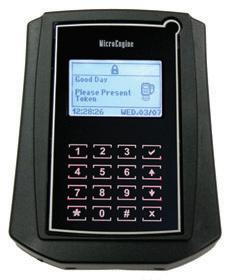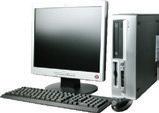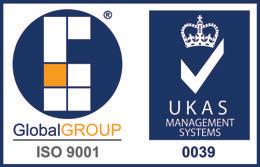











JURUTERA has an esimated readership of 168,000 professionals. Our esteemed readership consists of ceriied engineers, decision making corporate leaders, CEOs, government oicials, project directors, entrepreneurs, project consultants, engineering consuling irms and companies involved with engineering products and services.
Our business partners can be assured that their products and services will be given the circulaion and exposure it deserves, thus maintaining a sustained adverising presence to our core readers of decision-making engineers and technical experts. Our website ofers an even wider market reach, with added internaional presence, aided by our internaional ailiaion with oicial engineering bodies all over the world. Our online and oline adverising features such as banner adverising, aricle sponsorship and direct e-mail announcements have proven to be successful markeing strategies that will set the businesses of our partners apart from their compeiion.
For adverising enquiries, please contact:











The World Standard in Sustainability in Concrete Infrastructure by Crystallisation

The Miller Highway Tunnel was built in 2008 and runs from West 72nd Street, beside the Hudson River to the southern ip of Manhatan, New York City.
Extreme water condiions and leaking from high hydrostaic pressure through the concrete structure caused construcion diiculies and delays immediately from commencement of the project. Injecion and spot repairs were conducted as construcion proceeded but were insuicient to meet the speciicaion for a “dry” tunnel. Following a review of opions to solve the problem and because of Xypex proven performance in similar condiions Xypex products were approved to waterproof and remediate the tunnel by the owners, The New York Department of Transportaion.
The decision to use Xypex products was also inluenced by the Xypex Crystalline capacity to work on an ongoing basis, to signiicantly extend service life and to ofer an integral soluion that would enhance the quality of the concrete while delivering cost savings against more tradiional soluions.


A range of Xypex products were used to value engineer the soluion and included Xypex Concentrate, Xypex Patch n Plug, Xypex Mega Mix II for general protecion and Xypex FCM-80 was used to seal moving cracks induced by extreme weather condiions.
Subsequently a totally dry tunnel was delivered to The New York Department of Transportaion with esimated cost savings on the work of US$ 1.5 million. The tunnel remains dry.
For more informaion on how our soluions can provide sustainable beneits for your concrete assets, please visit our website at www.xypex.com.au or LinkedIn Page.

In precast concrete industry concrete elements are produced with high requirements on quality and durability. The production needs to be highly eicient and the producers aim to increase the output with constant quality. Especially the surface requirements are high as this is the calling card of the producer. With the Sika® ViscoCrete® Technology the water can be reduced and higher strength and an improved durability can be achieved. The eiciency of the production process can be optimized with the SikaRapid® Technology as the hardening process of the concrete is accelerated. Next to admixtures which are dosed directly into the concrete Sika ofers a large variety of products improving the quality and the eiciency of the production process, like products for formwork preparation, products for repair and protection as well as sealing and bonding products.

Number 08, AUGUST 2017 IEM Registered on 1 May 1959
MAJLIS BAGI SESI 2017/2018 (IEM COUNCIL SESSION 2017/2018)
YANG DIPERTUA / PRESIDENT
Ir. Tan Yean Chin
TIMBALAN YANG DIPERTUA / DEPUTY PRESIDENT
Ir. David Lai Kong Phooi
NAIB YANG DIPERTUA / VICE PRESIDENTS
Ir. Prof. Dr Jefrey Chiang Choong Luin, Ir. Assoc. Prof. Dr Norlida bt Buniyamin, Ir. Ellias Bin Saidin, Ir. Prof. Dr Ruslan bin Hassan, Ir. Lai Sze Ching, Ir. Lee Boon Chong, Ir. Ong Ching Loon
SETIAUSAHA KEHORMAT / HONORARY SECRETARY
Ir. Yap Soon Hoe
BENDAHARI KEHORMAT / HONORARY TREASURER
Dr Wang Hong Kok
BEKAS YANG DIPERTUA TERAKHIR / IMMEDIATE PAST PRESIDENT
Y.Bhg. Dato’ Ir. Lim Chow Hock
BEKAS YANG DIPERTUA / PAST PRESIDENTS
Y.Bhg. Academician Tan Sri Dato’ Ir. (Dr) Hj. Ahmad Zaidee bin Laidin, Y.Bhg. Dato’ Ir. Dr Gue See Sew, Y.Bhg. Dato’ Paduka Ir. Keizrul bin Abdullah, Y.Bhg. Academician Dato’ Ir.
Prof. Dr Chuah Hean Teik, Mr. Choo Kok Beng
WAKIL AWAM / CIVIL REPRESENTATIVE
Ir. Dr Lee Yun Fook
WAKIL MEKANIKAL / MECHANICAL REPRESENTATIVE
Ir. Fam Yew Hin
WAKIL ELEKTRIK / ELECTRICAL REPRESENTATIVE Ir. Lim Kim Ten
WAKIL STRUKTUR / STRUCTURAL REPRESENTATIVE
Ir. Dr Ng Soon Ching
WAKIL KIMIA / CHEMICAL REPRESENTATIVE
Ir. Prof. Dr Thomas Choong Shean Yaw
WAKIL LAIN-LAIN DISPLIN / REPRESENTATIVE TO OTHER DISCIPLINES
Ir. Roznan bin Abdul Rashid
WAKIL MULTIMEDIA DAN ICT / ICT AND MULTIMEDIA REPRESENTATIVE
Ir. Dr Chuah Joon Huang
AHLI MAJLIS / COUNCIL MEMBERS
Ir. Mohd Khir bin Muhammad, Y.Bhg. Dato’ Ir. Hj. Hanapi Bin Mohammad Noor, Ir. Dr Ahmad Anuar bin Othman, Ir. Ishak bin Abdul Rahman, Ir. Chong Pick Eng (PE Chong), Ir. Ng Yong Kong, Ir. Tejinder Singh, Ir. Sreedaran a/l Raman, Ir. Roger Wong Chin Weng, Ir. Assoc. Prof. Dr Ahmad Kamil bin Arshad, Ir. Dr Tan Kuang Leong, Ir. Hoo Choon Sean, Y.Bhg. Lt. Jen. Dato’ Wira Ir. Ismail bin Samion (Ret. RMAF), Ir. Hj. Anuar bin Yahya, Ir. Mah Way Sheng, Ir. Gunasagaran a/l Kristnan, Ir. Chen Harn Shean, Ir. Mohd Aman bin Hj. Idris, Ir. Gopal Narian Kuty, Ir. Dr Jimmy Mok Vee Hoong, Ir. Dr Leong Wai Yie, Ir. Razmahwata Mohamad Razalli, Ir. Abdul Razak Yakob, Ir. Yau Chau Fong, Y.Bhg. Dato’ Ir. Foong Choy Chye, Y.Bhg. Dato’ Ir. Kisai bin Rahmat, Ir. Yam Teong Sian, Y. Bhg. Dato’ Ir. Low Keng Kok, Y. Bhg. Dato’ Ir. Hj. Abdul Rashid bin Maidin
PENGERUSI CAWANGAN / BRANCH CHAIRMAN
1. Pulau Pinang: Ir. Ting Chek Choon
2. Selatan: Ir. Mohd Khir Muhammad
3. Perak: Ir. Abdul Razak bin Ali
4. Kedah-Perlis: Ir. Prof. Dr Rezuwan bin Kamaruddin
5. Negeri Sembilan: Y. Bhg. Dato’ Ir. Zainurin bin Karman
6. Kelantan: Ir. Hj. Mohd Zaim bin Abd. Hamid
7. Terengganu: Ir. Atemin bin Sulong
8. Melaka: Ir. Dr Tan Chee Fai
9. Sarawak: Ir. Vincent Tang Chok Khing
10. Sabah: Ir. Hj. Yahiya bin Awang Kahar
11. Miri: Ir. Paul Chiew Lik Ing
12. Pahang: Y. Bhg. Dato’ Ir. Sharuddin bin Mohd Simin
AHLI JAWATANKUASA INFORMASI DAN PENERBITAN / STANDING COMMITTEE ON INFORMATION AND PUBLICATIONS 2017/2018
Pengerusi/Chairman: Ir. Prof. Dr Ruslan Hassan Naib Pengerusi/Vice Chairman: Ir. Mohd. Khir Muhammad Seiausaha/Secretary: Ir. Lau Tai Onn Ketua Pengarang/Chief Editor: Ir. Prof. Dr Ruslan Hassan Pengarang Bulein/Bullein Editor: Ir. Mohd. Khir Muhammad Pengarang Prinsipal Jurnal/Principal Journal Editor: Ir. Prof. Dr Ruslan Hassan Pengerusi Perpustakaan/Library Chairman: Ir. C.M.M. Aboobucker Ahli-Ahli/Commitee Members: Ir. Lee Boon Chong, Ir. Ong Guan Hock, Ir. Yee Thien Seng, Ir. CMM Aboobucker, Ir. Chin Mee Poon, Ir. Dr Oh Seong Por, Ir. Tejinder Singh, Ms. Michelle Lau Chui Chui, Ir. Abdul Razak bin Yakob
LEMBAGA PENGARANG/EDITORIAL BOARD 2017/2018
Ketua Pengarang/Chief Editor: Ir. Prof. Dr Ruslan Hassan Pengarang Bulein/Bullein Editor: Ir. Mohd. Khir Muhammad Pengarang Jurnal/Journal Editor: Ir. Prof. Dr Ruslan Hassan Ahli-ahli/Commitee Members: Ir. Lau Tai Onn, Ir. Ong Guan Hock, Ir. Yee Thien Seng, Ms. Michelle Lau Chui Chui, Ir. Dr Oh Seong Por Secretariats: Janet Lim, May Lee
THE INSTITUTION OF ENGINEERS, MALAYSIA
Bangunan Ingenieur, Lots 60 & 62, Jalan 52/4, P.O. Box 223, (Jalan Sultan), 46720 Petaling Jaya, Selangor Darul Ehsan.
Tel: 603-7968 4001/4002 Fax: 603-7957 7678 E-mail: sec@iem.org.my Homepage: htp://www.myiem.org.my




NOTE Getting SMART with Building Management
FEATURE ARTICLES
Managing Facilities with Technology ....................11
Challenges that Hospital Facilities Managers Face in Ensuring Patients’ Safety .........................16
A Resident Engineer’s Experiences & Challenges ...........................................................24
Edgenta Berhad
FORUMS
Polypropylene Random (PPR) Piping Systems and Thermal Cycling Test In Operation ..............29
Half-Day Course on Heat Recovery System: Heat Pump - Hot Water System for Hotels & Hospitals ..........................................30
Technical Visit to Grease Trap Manufacturer VTSB Trading ..........................................................32
Why You Should Be an Engineer
FROM BRANCH International Conference on Materials Technology & Energy (ICMTE) 2017
All in the Name of Beauty
The leading solution for building structures introduces new features for concrete, steel and connection design, detailing, and smooth BIM collaboration.
Achieve faster project delivery with fully integrated RC and Steel building design and detailing in one model.

Quick project creation with intuitive new modelling features for steelwork, openings, drops, walls and

design
and

Smart design optimization of connections, foundations and core walls automatically saves your business time.

Meet industry demands for seamless BIM collaboration for easily coordinating your project models with Architects, Owners and Project Stakeholders. with automated RC, Steel and Shop drawings and optimized detail placement into your drawing sheets

DIMENSION PUBLISHING SDN. BHD. (449732-T)
Level 18-01-03, PJX-HM Shah Tower, No. 16A, Persiaran Barat, 46050 Petaling Jaya, Selangor Darul Ehsan, Malaysia.
Tel: +(603) 7493 1049 Fax: +(603) 7493 1047
E-mail: info@dimensionpublishing.com
Website: www.dimensionpublishing.com
Chairman
ROBERT MEBRUER
CEO/Publisher
PATRICK LEUNG
General Manager
SHIRLEY THAM shirley@dimensionpublishing.com
Head of Markeing & Business Development
JOSEPH HOW joseph@dimensionpublishing.com
Editor
TAN BEE HONG bee@dimensionpublishing.com
Contribuing Writers
PUTRI ZANINA & ZOE PHOON putri@dimensionpublishing.com zoe@dimensionpublishing.com
Senior Graphic Designer
SUMATHI MANOKARAN sumathi@dimensionpublishing.com
Graphic Designer
NABEELA AHMAD beela@dimensionpublishing.com
Adverising Consultants
THAM CHOON KIT ckit@dimensionpublishing.com
Accounts cum Admin Execuive
YEN YIN yenyin@dimensionpublishing.com
For adverisement placements and subscripions, please contact: DIMENSION PUBLISHING SDN. BHD. (449732-T)
Level 18-01-03, PJX-HM Shah Tower, No.16A, Persiaran Barat, 46050 Petaling Jaya, Selangor Darul Ehsan, Malaysia.
Tel: +(603) 7493 1049 Fax: +(603) 7493 1047
E-mail: info@dimensionpublishing.com
Subscripion Department
E-mail: info@dimensionpublishing.com
Printed by
HOFFSET PRINTING SDN. BHD. (667106-V)
No. 1, Jalan TPK 1/6, Taman Perindustrian Kinrara, 47180 Puchong, Selangor Darul Ehsan, Malaysia. Mailer
PERFECT MAIL SERVICES (648839-P) 14 Jalan TSB 2, Taman Perindustrian Sungai Buloh, Sungai Buloh, Selangor Darul Ehsan, Malaysia. Tel: +(603) 6156 5288
JURUTERA MONTHLY CIRCULATION: 22,500 COPIES
Submission or placement of aricles in JURUTERA could be made to the:Chief Editor
THE INSTITUTION OF ENGINEERS, MALAYSIA (IEM) Bangunan Ingenieur, Lots 60 & 62, Jalan 52/4, P.O. Box 223 (Jalan Sultan), 46720 Petaling Jaya, Selangor. Tel: +(603) 7968 4001/4002 Fax: +(603) 7957 7678 E-mail: pub@iem.org.my or sec@iem.org.my IEM Website: htp://www.myiem.org.my
© 2017, The Insituion of Engineers, Malaysia (IEM) and Dimension Publishing Sdn. Bhd.
PUBLICATION DISCLAIMER
The publicaion has been compiled by both IEM and Dimension with great care and they disclaim any duty to invesigate any products, process, services, designs and the like which may be described in this publicaion. The appearance of any informaion in this publicaion does not necessarily consitute endorsement by IEM and Dimension. There is no guarantee that the informaion in this publicaion is free from errors. IEM and Dimension do not necessarily agree with the statement or the opinion expresssed in this publicaion.
COPYRIGHT
JURUTERA Bullein of IEM is the oicial magazine of The Insituion of Engineers, Malaysia (IEM) and is published by Dimension Publishing Sdn. Bhd. The Insituion and the Publisher retain the copyright over all materials published in the magazine.
of

by Ir. Wong Win Heng Chairman, Building Services Technical Division
uildings today are a complex series of linked structure, system and technology. Modern technology allows every component of a building, such as lighting, security features, heating, ventilation and air-conditioning, to be monitored, selected and controlled independently and intelligently.
Building owners today are also concerned about energy cost, social-economic responsibilities, legislation and legal requirements as well as carbon footprint. To meet these objectives, buildings of the future must have the various elements connected in an integrated, dynamic and functional way.
An “intelligent mechanism” to access building performance and sustainability must be incorporated from the conceptual stage to design implementation and throughout the building life. Even older buildings can be upgraded with an intelligent mechanism.
Smart buildings use information from Building Automation Systems which connect the various sub-systems. With this information, we will be able to improve planning and asset management.
The field of Facilities Management is rapidly evolving, especially with the Internet of Things, Smart Technology and Building Information Modelling. Equipment and devices which can provide real time data are readily available and these can be connected to the Building Automation infrastructure seamlessly. Information may even be accessed remotely.
There have been concerns voiced about placing so much information on the network. We have heard of business systems crippled by cyber sabotage, so there is a need to securely update and control information when transferring over the network.
Here, I quote from American author Clifford Stoll who said that “Data is not information, information is not knowledge, knowledge is not understanding, understanding is not wisdom” and from Ram Dass who said that “Information is just bits of data. Knowledge is putting them together. Wisdom is transcending them”.
With all the information available, we can make better judgments andimproveddecisionsfortheoptimalperformanceofabuildingwhich will, in turn, offer its occupants greater comfort for peak efficiency.

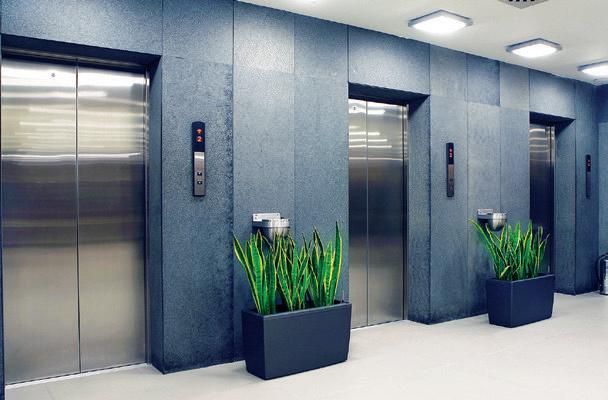


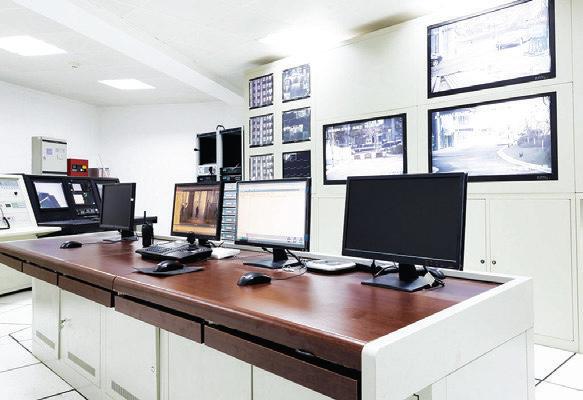

Few occupants of a building pay attention to Facilities Management. In fact, they may not even know what it is all about. However, they would complain loud and clear if the building conditions and environment are not up to their expectations or they do not feel comfortable and at ease in it.


Today, managing a building is no longer just about making sure lifts and escalators do not break down or that lighting and air-conditioning work properly. Building Managers today have to manage the entire building community and Smart Facilities Management helps them to move away from full manual operations towards more intelligent management of the building.
It’s about optimising assets to improve lives, says Encik Azmir Merican, Managing Director and CEO of UEM Edgenta Berhad, who tells JURUTERA more about changing trends and the use of modern technology such as Building Internet-of-Things and Building Information Modelling in the industry.
What are the current trends in Smart Facilities Management in Malaysia?
AZMIR: Facilities management, in general, is becoming more people-centric. There is a paradigm shift from just managing a particular building to managing the entire building community. In a largely crowd-driven market, service deliverables are evolving from the traditional business-to-business (b2b) into a business-to-business-toconsumer (b2b2c) model.
Given this scenario, a more user-centric approach needs to be taken. The concept of facilities management needs to be broadened beyond just managing a building to providing a more enhanced workplace experience to the building user.
To do this, we have had to embrace technology which hasenabledustodothingsneverbeforeimaginedpossible.
We are currently in the midst of the 4th Industrial Revolution and we are living in a digital world. Thus, the management of facilities will have to become digitalised too. This is because “facilities management as a service” needs to be reassessed; the collection of data from every service needs to be analysed and the insights utilised to improve asset management and to provide a Smarter Facilities Management service.
What is the main focus of your organisation in terms of Smart Facilities Management?
AZMIR: Our vision of “optimising assets to improve lives” shapes our purpose and focus. We work with clients to ensure their assets yield maximum value by designing an asset management programme over the life of an asset.
We also want to provide building occupants with an enhanced workplace experience. Today, you are “recognised” as soon as you step into a building where all systems i.e. barrier gates, lift, lighting and air-conditioning, are all automated for your convenience.
Our goal, in terms of Smart Facilities Management, is to support this level of service for the building user. All these translate into better efficiency, lower wastage, enhanced services and greater convenience to customers and asset owners.
AZMIR: In terms of Smart Facilities Management, we have come a long way but there is room for progress. The conventional approach is to employ reactive and preventive methods which are labour-intensive.
In the past, we tend to look at short-term savings and outcomes. This creates a vicious cycle where both owners and service providers adopt a short-term outlook that leads to a “lose-lose” situation.
But all this is changing as owners now realise that proper budgeting and a long-term outlook can result in greater assets performance and optimisation.
Today, Facilities Management is evolving along with technologyandthelocalindustryisbecomingmorevibrant and forward-thinking in embracing new methodologies towards managing green and smart buildings.
Building owners are slowly but surely becoming more aware of the need for Smarter Facilities Management, especially since most new buildings have been equipped with smart technologies.
What are the biggest challenges in this industry?
AZMIR: For an asset to yield maximum value, owners have to take into account the whole life-cycle cost. We need to put in place a proper asset management programme and budget so that performance is optimised.
Generally, this is overlooked; asset management does not reach senior management strategic discussions; it is more for the operational side to manage and execute and attention is given only when there is a service problem with the asset. However, this often proves more expensive to fix than to prevent.
Other challenges include the lack of a properly designed asset management programme and tenure which are short term as well as setting aside an appropriate budget for Facilities Management.
The industry is largely dependent on low wages and low automation. This is a vicious cycle because the cheapest provider will not be able to deliver when it employs barely qualified, undertrained personnel. All these lead to client dissatisfaction.
Our organisation is a firm believer in the total asset life-cycle approach and we employ the latest available technology to enhance the workplace experience. We want to change the conventional way of doing things.
What are the advantages for developers/ property owners who implement a Building Internet-of-Things(BIoT)systemfortheirproperties?
AZMIR: A BIoT system enables property owners to link up with the various systems within the building/property and to collect data for analytics and insightful improvements.
The key to providing an enhanced workplace experience lies in understanding building behaviour and people movement patterns. Such analytics provided in real time will enable us to improve our asset solutions and service deliveries. For example, lift positioning is based on daily movement pattern analysis so as to reduce waiting time. Air-conditioning and lighting are configured to load and switch on based on people presence.
The science behind a BIoT system is the use of cloud computing, machine learning and artificial intelligence. The building is programmed to use data to operate and maintain the building.
With the BIoT system, there will be a large amount of data collected and analysed. Will these indings be made available to the engineering community and how does this inluence the implementation of facility and asset management today?
AZMIR: We have recently completed our pilot project and are in the midst of publishing our findings. The use of big data has a tremendous influence on the way facilities will be managed in the future.
As data is now collected in real time, it gives us an immediate overview of the facility and action can be taken immediately. Access to real time information on equipment performance and efficiency will enable us to better operate, maintain and manage assets and facilities.
Analysing the data will help us understand patterns. Machine patterns can be studied to predict failures and detect anomalies while tenant patterns can be studied to provide workplace solutions and enhance customer experience.
Are these smart solutions affordable to the generalmarketoronlyto“highend”facilities?
AZMIR: Most existing buildings already have a Building Automation System (BAS) or Building Management System (BMS) while all new buildings are embedded with smart building technologies.
What we do is to expand the existing BAS/BMS into a BIoT system. The basic requirement is generally affordable but the cost goes up as the complexities increase. It all depends on the clients’ requirements and needs in terms of how smart they want their building to be.
Do we have suficient skilled manpower for Facilities Management? If not, how do we overcome this problem?
AZMIR: There is no shortage of skills in Malaysia. However, a career in Facilities Management is not really attractive to the younger generation.
Nevertheless, as Facilities Management evolves into a smarter service, and as buildings become more complex with modern technology, we have noticed an influx of new skillsets, such as data scientists and analysts, into the industry.
The existing workforce can now be seen to embrace digitalisation while new entrants realise that Facilities Management has become technologically advanced. There is a need to create more awareness in the market to attract more talents.
Our organisation has plans to set up an academy for training in Asset and Facilities Management.
Malaysia is often criticised for not providing optimum maintenance for facilities. What is your opinion, from the facilities management perspective?
AZMIR: This issue stems largely from the fact that many organisations under-budget when it comes to Facilities Management. This practice imposes a certain constraint on the service provider and generally affects the quality of service delivered. It also propagates the culture of dependency on cheap, foreign labour. This is not only bad for the industry as a whole but it’s also bad for our economy, in terms of expatriation of funds overseas.
The lack of sufficient budgets also acts as a deterrent to the adoption of new maintenance methodologies such as condition-based maintenance, predictive maintenance and reliability-centred maintenance. Malaysia is still focused on a timebased maintenance approach, which is insufficient in this time and age.
We believe greater awareness needs to be created among building owners on the availability of new technologies and methodologies that can optimise the maintenance of their assets and facilities.
When it comes to Smart Facilities Management, will the push/ pull factor be coming from the propertyownersorthefacilities/ asset management company?
AZMIR: Building owners are already intotheconstructionofsmartbuildings and this will create the demand for SmartFacilitiesManagement.Itisonly a matter of time for the industry to uptake Smart Facilities Management. Thesamethinghappenedwhen the Green Building movement took off; the industry had to embrace Green Facilities Management. This is a demand-driven industry.
AZMIR: Internet-of-Things is probably the most impactful technology in the world today. It is changing the way we live. It is connecting everything around us, from mobile devices and wearables to cars, household equipment and more.
Inbuildings,thechillers,pumps,liftsandeventhelighting systems are being put online and they are sending back a lot of data. Analysing the collected data and gaining insights which can help us improve service delivery is what Smart Facilities Management is all about.
BIM is also making headway in construction and eventually, it will impact Facilities Management. BIM holds a lot of information about a building, from design to construction. This is extremely valuable information to a facilities manager and the information will definitely enable the provision of Smart Facilities Management.
We often hear people saying that after some time,high-techfacilitiesmanagementsystems turn into a "white elephant", due to lack of maintenance and skilled workers/managers. What is your opinion on this?

AZMIR: A high-tech system needs to be operated, maintained and managed by trained and competent personnel as otherwise, many of the features will not be utilised. This is why it is important to choose a competent service provider. Having the right skillset is extremely important in ensuringtheextendedlifeoftheasset.
In addition, the maintenance contract must specify the right maintenance methodology and technology used when it comes to a high-tech system. Failing to specify the right approach will lead to a poorly maintained system.
How do you see the future of Smart Facilities Management in Malaysia in the next 5 years?
However, as we are trying to change the conventional ways, we are encouraging building owners to embrace technology, to use real time information to analyse data andtoadoptasmarterapproachtoFacilitiesManagement. We are pushing for change from our end too. So it works both ways.
Will IoT and the BIM (Building Information Modelling) have any inluence on people adopting smart facilities management?
AZMIR: The outlook is very positive. The increase in smart building construction will be the main drivingfactorbutwearealsoseeingademandtoupgrade existing buildings into smart buildings.
The IoT, coupled with cloud computing technology, is making considerable inroads into the industry. The applications cuts across widely and is paving the way for machine learning and artificial intelligence in Facilities Management.
As the 4th Industrial Revolution pushes for digitalisation in every aspect of our lives, it is also pushing for the digitalisation of Facilities Management into Smart Facilities Management.
Publisher:
Explore our full set of Professional and Integrated PUBLISHING MANAGEMENT SERVICES:
» Project Management
» Creaive Management
» Ad Space Management
» Mailing Management
» Print Management
• Annual Reports
• Booklets • Brochures
• Bunings • Business Cards
• CD / DVD Replicaions
• Calendars • Cards & Invitaions
• Cerificates • Custom Prinings
• Envelopes • Folders
• NCR Bill Books • Notepads
• Leaflets • Leterheads Posters










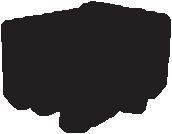
Others


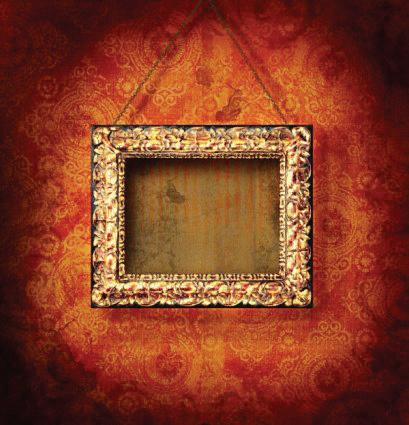








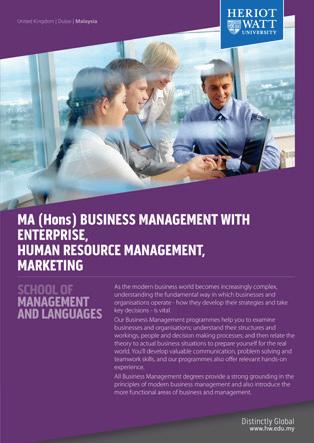














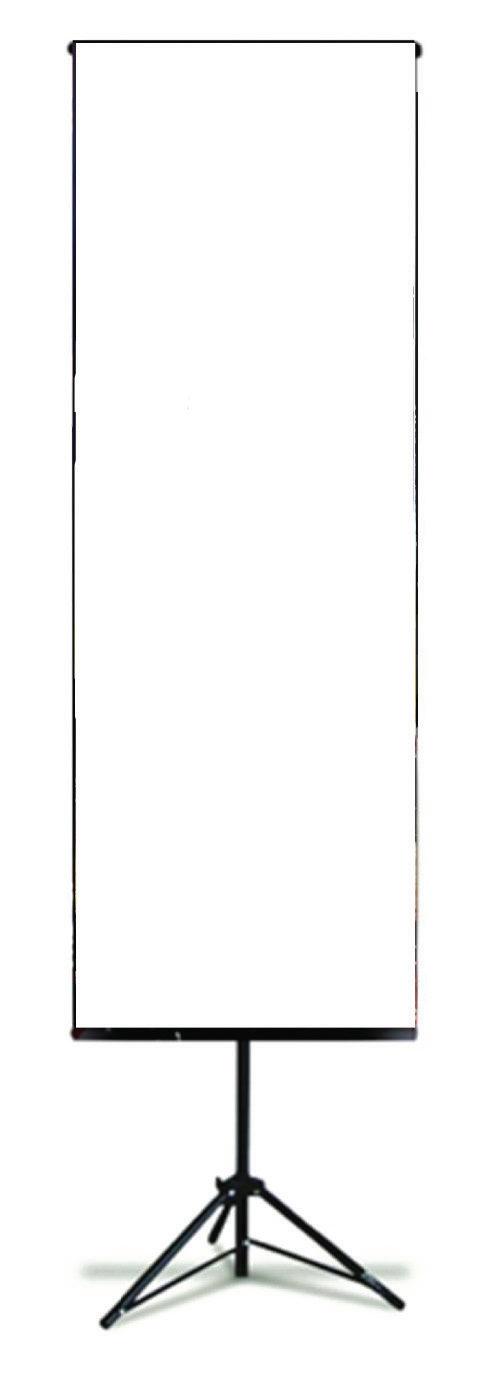



Dimension Publishing Sdn Bhd (449732-T) Level 18-01-03, PJX-HM Shah Tower, No. 16A, Persiaran Barat, 46050 Petaling Jaya, Selangor Darul Ehsan, Malaysia.


The ofice/workplace is where most of us spend at least a third of our working lives. These days, with the construction of smart and green buildings, it is even more important to ensure that the workplace has an environment that offers safety, security, health, comfort and operational eficiency.
When smart facilities are well managed and maintained with industry best practices, the overall productivity of its occupants will also increase and the goal of environmental sustainability will be attained.
This is where Facilities Management (FM) plays a crucial role in meeting the ever demanding challenges to provide a sustainable built environment. To do so, we can use modern technology to complement existing FM systems.
Facilities Management is made up of multi-disciplined activities to ensure the built environment of a building, from which desired returns of its investment is generated through satisfactory performance of its facilities assets, by integrating the 5 strategic pillars of FM (people, process, workplace, technology and sustainable environment).
The complementary competencies to uphold these five pillars are: [1.IFMA]
a) Operations & Maintenance, b) Quality, Safety & Health Assessment, c) Planning & Project Management, d) Space Planning of Real Estate, e) Technology & Innovation, f) Human Capital & Environment, g) Financial & Capital Budgeting, h) Leadership & Stakeholder Management, i) Communication.
It’s not just about operations and maintenance, although these are a substantial part of FM. Other non-technical competencies, such as leadership, communication, human resource management etc., are equally important to ensure the proper management of the built environment.



If you look at the permutation of the 5 pillars and the nine competencies against those of active and passive building systems, as-built and in-operations, you will see that the management of these technologies, data, skill-sets, activities and information, in order to provide a clean, safe, secured, comfortable and satisfactory built environment for the occupants, is a huge challenge.
With modern smart buildings, where information and functionality of major building systems are integrated and shared over a common network to improve operational efficiency and to increase the return on investment for building owners, the challenges for FM are raised to new levels in view of wider, more varied and colossal information to be managed.
Therefore, a holistic and professional approach in smart FM is necessary.


Smart FM is the ability to utilise the integrated and huge library of digital information to plan, measure, analyse, monitor, deliver the expected service level and to present a performance dashboard. To achieve the desired results in a sustainable manner, it is important that Facilities Managers equip themselves with some new and not-so-new technologies to leverage on their technical competency and management acumen.
Here, we will discuss 2 types of facilities management technologies:
Managing smart facilities is not so effective when software tools such as Computerised Maintenance Management System(CMMS),areappliedasthesearefunctionalspecific and have inherent limitations. Recent developments in FM software offer a complete end-to-end solution which provides rapid integration to legacy systems with Resource Planning (ERP), Customer Relation Management (CRM), Building Automation System (BAS) and others. It links the information silos and diverse applications supporting the 5 Pillars discussed earlier and physical assets into a comprehensive and seamlessly integrated solution.
Applications such as Building Operations Management, when integrated with BAS, Internet of Things (IoT) and/ or the Environment Sustainability program, allow facilities operation to be adaptive and responsive to prescribed requirements through data transmitted from meters, sensors and devices that measure actual behaviour, and to communicate with other systems. This integrated interaction also optimises operations in energy efficiency through the control functionality of switching on-off, load management in auto-loading, auto-shedding and alarm notification when a certain threshold is breached.
As an illustration, FM software with IoT solutions is able to spontaneously reduce the load of air-conditioning systems and to turn off lights when rooms are vacated, instead of waiting for pre-set times programmed by the engineer, to be triggered.
[2.Intel]
The newer integrated FM software are Computer Aided Facilities Management (CAFM) System, Integrated Workplace Management System (IWMS) and Total Infrastructure Facilities Management (TIFM) system. These
are able to provide enhanced facilities asset tracking and utilisation, better performance reporting via balanced scorecards or personalised dashboards using cloud technology, and to maximise the useful life of smart facilities through redeployment.
Apart from the ability to integrate the data from all facilities to improve operational effectiveness, energy and water efficiency and indoor environmental quality, smart FM software also has other added functions which promote business transformation. The much talked about business transformation solution includes:
a) Benchmarking against industry best practices and metrics.
b) Compliance to statutory and regulatory requirements and mitigate business risk through its supports in internal controls for life-safety and facilities protection.
c) QualityassurancemethodologiesthatsupportSixSigmaefforts,associates costs and variation with processes and measuring results, thus setting the stage for continual improvement and decision-making processes.
As more than 35% of a building facility assets are, typically, tied to the cost of real estate, infrastructure and facilities, it is incumbent on the Facilities Manager to significantly improve the utilisation of facilities and to optimise the ROI of the facility assets by minimising the total cost of ownership. The net result is to ultimately increase shareholders’ value besides occupant satisfaction and achieving environment sustainability. [3.Archibus]
Building Information Modelling (BIM) is a tool for creating a 3D digital model which visualises every aspect of a building and which shares this information across the entire building life-cycle. It allows professionals in the construction industry to plan, design, construct and manage facilities and infrastructure more efficiently.
The advantages of BIM are many, such as increasing the accuracy of information-sharing among stakeholders in a construction project, reducing redundancies and miscommunications, identifying clashes in piping, cabling, structure, openings etc and hence lowering the cost of re-works, reducing EOT as well as improving design optimisation, quality and efficiency in remodelling.
The amount of information, data, technical specifications, dimensions and bills of quantity to build a BIM model, is so comprehensive and complete


that it makes FM, especially maintenance and repairs of the built environment, a relatively easier task. When BIM is integrated with FM software, its usefulness is extended to the entire life-cycle of the building or infrastructure.
Though the benefits of BIM are well documented to include data and life-cycle management, its application is, at present, largely confined to construction. Generally, developers of private properties do not want to spend that little extra 0.5% or less of the project costs, to include BIM in their projects as they will not reap the benefits to the life-cycle of the facilities if they should sell their properties. Due recognition must be given to government ministries and agencies such as MOW, MOH, JKR, CIDB which not only champion the need for BIM but have also had BIM implemented in their projects.
BIM is useful even in older facilities. The benefits are the same as that for new buildings. For older buildings, BIM can be generated from the original and retrofit design drawings and, in some cases, laser scanning. It can also be used to monitor and benchmark systems, recommend retrofit opportunities, establish emergency evacuation routes and for training.
Conclusively, BIM is most effective when used in conjunction with smart buildings which involve the dynamic integration of building and information systems and the most complete picture of the status of a building is possible and accessible in real time. [4.Frost & Suvillan]
While there are other technologies, applications and tools which enhance the effectiveness and quality of FM delivery, the 5 Pillars (people, process, workplace, technology and environment sustainability) remain the cornerstone of FM. Managing facilities of smart buildings does not diminish the need for the 5 Pillars and FM technological tools nor does it reduce the cost of maintenance of smart facilities. but their operating expenses.
There is an increasing demand for engineers and engineering technologists with a heightened penchant for operations and maintenance, IoT, macro, micro and financial management, for the FM of smart buildings. FM markets are huge, both locally and internationally. The Gulf Cooperation Council (GCC) of 6 Middle East nations spent an estimated US$36.5 billion on FM in 2015, whichistheequivalentof300%ofMalaysia’sdevelopment budget. But there are not enough FM professionals to meet the demand of the growing market. The lack of awareness of the profession and its low stature, which does not commensurate with its professional roles and responsibilities, are what contributes to the shortage of FM professionals.
The big challenge for the industry is to grow a pool of FM professionals to maintain the smart facilities of worldclass standard in a cost-effective and sustainable way lest the facilities decimate into obsolescence in double quick time. However, the reverse is true when FM professionals are equipped with FM technologies as an increase in occupants’ satisfaction in the built environment will reap higher financial returns to the owners.
[1] International Facilities Management Association (IFMA) www. ifma.org
[2] Intel Solution Brief Smart Buildings “Increasing Property Owner Profitability with the Internet of Things”
[3] ARCHIBUS “Total Infrastructure and Facilities ManagementThat Makes a World of Difference”
[4] Frost and Sullivan “The Importance of BIM in Facilities Management”
Ir. Ong Ching Loon, currently the Managing Director of Cofreth (M) Sdn. Bhd., holds a BSc Hons degree in Mechanical Engineering and a MBA from University of Bath, UK. A Professional Engineer with Practising Certiicate and an ASEAN Chartered Professional Engineer, Ir. Ong is a Fellow and Vice President of the IEM.
Dr Lee Siew Teng is Senior Analyst of Strategic Management Unit in the CEO Oice of Cofreth (M) Sdn. Bhd. She received her BEng (Hons.) Electrical and Electronic Engineering and PhD in Engineering from the University of Nottingham in 2008 and 2015 respectively.
Title: Talk on “Grenfell Tower Fire Disaster – Lessons Learnt” 15 August 2017
Organisedby :MechanicalEngineeringTechnical Division
Time :5.30p.m.-7.30p.m.
CPD/PDP :2
Title: Technical Visit to Yakult (M) Sdn. Bhd. 19 August 2017
Organisedby :ChemicalEngineeringTechnical Division
Time :8.30a.m.-1.00p.m.
CPD/PDP :4
Title: 1-Day Practical Workshop on Arbitration and Adjudication 19 August 2017
Organisedby :ChemicalEngineeringTechnical Division
Time :9.00a.m.-6.00p.m.
CPD/PDP :7.5
Title: 2-Day Course on the Fundamentals Knowledge for Project Managers 21 - 22 August 2017
Organisedby :ProjectManagementTechnical Division
Time :9.00a.m.-5.30p.m.
CPD/PDP :15
Kindly note that the scheduled events below are subject to change. Please visit the IEM website at www.myiem.org. my for more information on the upcoming events.














There have been many occurrences of fires in hospitals. Many were minor incidences which were spotted and controlled easily. However, a few major fires have hit the national headlines.
In a major incident, 6 patients died when fire broke out in the Intensive Care Unit in Hospital Sultanah Aminah (HSA) on 25 October, 2016. One staff nurse was injured when she jumped out the window to escape the engulfing smoke.
Listed here are some fire incidents in local hospitals:
30 July, 2011 At 12.30 a.m., a patient started a fire with a cigarette lighter in the Mental Patients Isolation Room at the Hospital KL Emergency Department. The fire spread rapidly, generating thick smoke. Only one casualty reported.
8 September, 2012 74 patients at Port Dickson Hospital were evacuated after a small explosion at the main electrical switch board led to electrical outages. Surgery was brought to a standstill.
15 February, 2014 A new building block at Sarawak General Hospital caught fire because of a welding spark from a nearby construction site. No damage was reported. However, an Indonesian construction worker was found dead on the scene with burnt marks and 151 patients from 6 wards were evacuated.
15 August, 2016 A small fire occurred in a storeroom of Sri Kota Hospital in Klang. There were no casualties and none of the patients had to be evacuated.
As for the fire at Hospital Sultanah Aminah, although the government had promised to conduct a thorough investigation, some questions remained unanswered.
• Are our hospital facilities safe?
• Have healthcare industries taken serious actions to prevent fire fatalities?
• What are the lessons learnt from the incidents?
• How can Hospital Facilities Managers avoid incidents such as fires from happening?

Fire broke out at the ICU room of Hospital Sultanah Aminah on 25 October 2016
Unlike other buildings, hospitals require a higher level of safety standards because of the poor health conditions of patients and their limited mobility in cases of evacuation.
Apart from Uniform Building By-Laws etc., which apply to all buildings, there is an additional act that governs private healthcare facilities and which ensures the safety of patients. The Private Healthcare Facilities and Services Act 1998 Act 586, which was enforced in 2006, mandated that healthcare facilities be designed and operated to ensure patient safety. In addition, the Medical Device Act was enacted in 2012 to govern medical device design, supply, installation, operation and maintenance activities.
The Ministry of Health is responsible for ensuring that private healthcare institutions built after 2006, comply with the Private Healthcare Facilities and Services (Private Medical Clinic or Private Dental Clinic) Regulations 2006. In the regulation, there is a clear reference that private health care facilities are required to have regular building inspections by the Fire Department and to show the Fire Certificate when renewing their operating licences.
Many government hospitals built after 2006 were also designed and constructed to meet the standard
Your equalizer to handle simple to complex jobs at an affordableprice



MULTI PUROSE LICENSE KEY THAT PROVIDES A SINGLE USER ACCESS TO THE STAAD & RAM PRODUCT LINES.

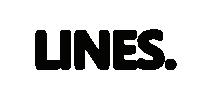

VR-CAM Technologies SdnBhd

No 79, OG Business Park, Tmn Tan Yew Lai, 58200 Kuala Lumpur
Tel: (03) 7782 8898, 7785 8898 Fax: (03) 7782 6898
Web: http://www.vrctech.com
Contact :-
S.Naren: 013-3477317 :Email: naren@vrctech.com
Ruben : 017-8818893 : Email: rubenp@vrctech.com
Automate wind notional & seismic loads with ease.
BS 8110,BS 5950 2000, BS 5950 part 5, BS 5400 part 2 & part 3, BS 8007
EC-2,EC-3,EC-5,EC-8 – Includes various country annexes
Malaysia Annex for EC-2 & EC-3 included, UBC, IBC & etc




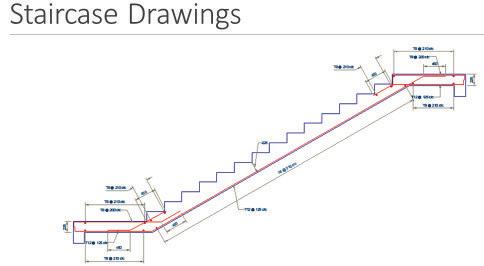
requirements. The problem lies in older government hospitals which were not constructed according to the regulation and standard. Many cannot comply, especially on architectural and structural designs.
According to records from the Ministry of Health, 46 hospital buildings are more than 50 years old. For instance, the main building of Hospital Sultanah Aminah, where the fire occurred, was commissioned in 1941 and was based on Nanking Central Hospital, a pre-World War II design hospital. To make things worse, many of these hospitals have seen significant changes in the clinical layout, due to changes in functionality. They are now operating with facilities which are not the intent of the original designs.
After the HSA incident, the Ministry conducted a fire safety audit in these hospitals and identified several fire risks, such as ageing fire prevention systems, dilapidated electrical wiring and installation systems and the installation of medical gas systems which were not according to required standards. There was also the need to upgrade engineering systems.
But with the present budget constrain, how quickly can the authorities fix these issues in these government hospitals? Meanwhile, under these conditions, how do Facilities Managers make hospitals safe and ensure they meet the latest safety standard requirements?
The Malaysian Society for Quality in Health (MSQH) 5th Edition: 2017 clearly defines the requirements for Environmental & Safety Services as the Standard 2 (Figure below).

Facilities Managers of hospitals need to ensure the risk for patients is minimised. He/she needs to ensure proper management of fire safety, disaster management and hazardous material management. He/she is responsible to ensure hospital facilities are safe from hazards and that the fire-fighting system is functional at all time.
Hospital facilities vary from highly complex infrastructures for general hospitals to simpler designs for district hospitals and psychiatric hospitals. It is important that the Facilities Manager identifies the risks and hazards of fires according to the design of the hospital and the systems installed. He/ she has to ensure that the hospital employees are well trained in fire safety and the evacuation process as well as organise an annual fire fighting inspection programme. There must also be a trained emergency response support team as part of the disaster management.
Fires can only start when the fire triangle components (fuel, oxygen and heat) are available in the right composition. To manage fire incidents, a Facilities Manager must ensure the fire triangle is never complete or, if a fire breaks out, that this is arrested at the earliest possible time.
a) Fuel: There are many flammable items in wards such as alcohol rubs, drapes, linen, boxes and documents. A high volume of combustible and flammable materials are also stored in areas such as laboratories and the pharmacy. Storage such as bulk LPG cylinders for use in the kitchen should not be located near the oxygen VIE tank or the car park area.
It is worthy to note that to minimise the fire risk, many hospitals have implemented proper storage and good housekeeping, using the 5S concept.
b) Oxygen: Hospitals use oxygen and medical air, either piped in from gas plant rooms or from cylinders placed next to the patients’ beds. Leaking oxygen terminal heads and regulator valves are seldom detected. This is very dangerous, especially in an enclosed room such as the isolation unit.
Few hospitals have a medical gas leak detection survey programme. In most cases, the Facilities Department is notified when the ward staff nurse complains after the local alarm panel is sounded, which occurs only if there is a major leak.
The Facilities Manager is responsible for ensuring that the Medical Gas Piping System (MGPS) Authorised Person regularly trains nurses on how to close the valve during a potential fire emergency. The area valves service unit (AVSU) should be located in an easily accessible area, preferably close to the nurse station or at the entrance to the department/room. The AVSU should not be blocked by emergency trolleys or other items at all times.
c) Heat: A heat source can be man-made or from equipment. Examples of man-created heat source are:
• Patients/visitors smoking and using lighters.
• A contractor installing piping in the ward.
• Cooking done at a proper designated place.
• Charging hand-phones at the clinic power socket.
These activities need to be controlled either by permit to work system and continuous surveillance by the Safety & Health Officer. Under Act 281, Food Act 1983, hospitals are gazetted as non-smoking areas.
A more common heat source is the electrical system such as:
• Short circuit due to old or damaged wiring.
• Overuse of extension cords. These should not be used in critical areas such as operation theatres and critical care units.
• Electrical installation that do not comply with electrical safety standards.
• Domesticappliancestobecheckedforcertification.
• Overloading relay protection being tampered with.
• Inadequate power supply to facilities, causing an overload in the main switchboard breakers.
• Electrical single line drawings not endorsed by Professional Electrical Engineer or when the actual installation differs from the drawings.
• Poor maintenance and replacement programmes.
• Air conditioning systems are not serviced regularly.
• Use of uninspected biomedical equipment.
• Poor equipment design and installation. For example, wiring and medical gas piping has to be physically separated by metal compartments for pendants and bed heads.
• Electrical rooms are not locked and flammable/ combustible materials are stored inside the room.
• Rodent infestations.
The Facilities Manager needs to establish proper inspections by competent personnel as well as have a good maintenance programme and a policy for equipment purchased and obsolescence.
In the event of fire, a fire-fighting system acts as a protection system. The Facilities Manager must ensure that all active and passive systems are well designed, installed and maintained in good working condition. Older hospitals have a serious issue where the fire-fighting system has not been upgraded to current requirements or the equipment installed, such as panels, is obsolete.
Hospitals may comprise different blocks of buildings and the various fire-fighting systems are sometimes not connected to a main central alarm. Or the panels are faulty and the maintenance costly. When budget is limited, the fire-fighting systems are not monitored from a main central control room.
Because of their architectural layout, old hospitals may not be able to comply with current passive fire protection standards such as emergency staircases, fire and smoke compartments, fire barriers and protected areas. Even when a fire-fighting system is provided, we often find fire doors kept open with chokes or faulty magnetic holders, penetration by cables conduits and air-conditioner ducting
on fire walls without fire barriers or fire dampers. This is evident when a hospital has gone through many retrofitting over the years and, most of the time, the fire-fighting system requirement is overlooked.
The author also wishes to highlight the challenges between clinical and fire safety requirements. For example, according to the Private Healthcare Facilities & Services Act, patients’ toilet doors should open outwards. The Fire Services Act requires that doors should not open to the corridor. So it is a challenge when the patients’ toilet is located next to the main corridor.
Another case to highlight is that the door to a patient’s room should not be a fire-rated door as the patient will not be able to open it in case of fire. Our regulations do not mandate dedicated escape windows especially in high rise hospitals to allow the Fire Department to assist in evacuating patients and the congested building design of some hospitals means fire trucks cannot get close to the building for the sky lift to reach the upper level windows.
In the HSA fire incident, all the patients died from smoke inhalation and not because of the fire itself. Older hospitals generally use natural ventilation in the wards. Today, most wards, except for class 3 wards in government hospitals, are equipped with an air-conditioning system. For high rise hospitals, the windows are kept locked or can only open minimally to prevent patients committing suicide. So, when fire breaks out, the smoke will quickly engulf the room and spread rapidly to the floor via the return ducting.
Hospital Air Handling Units (AHUs) should be equipped withfreshairsupplytomaintaintheairchangerequirements. The air should be returned in a duct system. AHUs should be cut off when the fire alarm is triggered. Often, the interlocking logic is not installed and even when it is, it is not tested to avoid interrupting the patients’ comfort.
For newer design hospitals, there are pressurised corridors to minimise smoke ingress. However, the pressurised fan can be a hazard especially if the air extraction is from polluted areas such as the road and brought into rooms for critically-ill patients. The author noted this when investigating the deaths of five critically-ill infants in a neo-natal ICU which were directly contributed by dirty air due the smoke spill fan running under faulty conditions.
It is thus important that a Facilities Manager understands the hospital ACMV system and its functionality during emergencies.
The Facilities Manager must be fully conversant with the fire risks in a hospital. It is not enough that the fire-fighting system undergoes a normal maintenance inspection. There must be an annual plan which includes testing of the system to ensure everything is fully functional.
The Facilities Manager has to establish and test proceduresforevacuatingcritically-illpatients,thedisabled, children and elderly patients. All staff members must be







trained to use the fire-fighting and rescue equipment. It is important that the staff orientation programme includes basic fire-fighting skills and evacuation methods.
There is a need for regular disaster drills which involve departmental and total evacuation, including table top exercises that cover various incidents so that the staff members will know how to respond in an incident.
The Facilities Manager should be the field driver of disaster management as he/she is the person who knows the design and operation of hospital systems. He/she needs to coordinate the cutting off of the medical system, air conditioning system and electrical supply to the affected area. He/she is also responsible for activating the back-up system and for getting the supply back to non-affected areas.
One area that is greatly lacking is the sharing of lessons learnt from incidents. Investigation findings are not publicised among Facilities Managers to prevent similar errors from being repeated. There are limited circulars on improving the system and making them the standard. In some cases, the root causes of the incidents are not even revealed due to confidentiality and to avoid potential legal proceedings.
Most changes in hospital facilities are due to clinical requirements. The clinician will look at short-term requirements and request the Facilities Manager to make the modifications. Where changes to the layout and functionality are concerned, attention is usually given to architectural layout instead of mechanical and electrical system requirements. When consultants are engaged, they confine their scope to the retrofit area without looking at the overall hospital design. A few fires have occurred due to the electrical system when the main supply system could not cope with the added load requirements.
Often, hospital design documents are not made available for reference or are not accurate as minor changes have not been incorporated. Many major retrofitting of government hospitals are planned and executed by the Ministry of Health’s Engineering Department at its headquarters. There had been cases where the Hospital Engineers and Facilities Managers were not consulted until the project was handed over. Because of this, costly mistakes at the construction stage could not be avoided.
Facilities Managers of hospitals require additional competencies to handle the complexities involved. They and healthcare engineers should not be restricted to their own disciplines but should be trained in the hospital operations too.
It is commendable that the Ministry of Health has taken steps to ensure that Facilities Managers are trained and qualified to manage government hospital facilities. The MedicalDeviceAuthorityhasalsotakensimilarstepstostart registering competent persons to operate and maintain medical devices, including piping systems for medical gases.





Facility Management Building Management Mechanical System Electrical System Performance Management
• Biomedical Management
• Facility Management
• Building Requirement
• External Management
• AirCondition andMechanical Ventilation System
• Vertical Transportation System
• MedicalGases System
Most Facilities Managers are also engineers. When a Facilities Manager is from another discipline, he must ensure he is supported by competent engineers who understand the electrical, ACMV, vertical transport and fire-fighting systems so that they can act in an emergency. Below are the areas that a Facilities Manager needs to understand for effective management.
It is equally important that Facilities Managers in private organisations also undergo similar training.
Facilities Managers not only keep the hospital equipment and system functioning but more importantly, they
• General Requirement
• CriticalAreas
• Energy Management
• IndoorAirQuality
also keep patients safe and comfortable. With hazards posed by equipment, ageing systems, patients and staff members, a Facilities Manager must be equipped with the knowledge and skills to manage a hospital effectively. He/she should not be regarded as just a maintenance person but rather as the person who ensures the building is fit for occupancy and for patient healing.
The IEM Library has a collection of some important and latest Malaysian Standards (MS), which can be viewed by IEM members as and when necessary. Members may log in to The IEM library portal to find out the titles of the available Standards.
Members can also give suggestions to purchase any other MS that would be beneficial for other members too.
The IEM library is a member of the SIRIM Library since March 2014.
IEM Members who wish to browse or borrow other International Standards can contact the IEM Library staff on how members could use our Membership Card to borrow the Standards. The Library Sub-Committee wishes to provide better services for all members.
Please contact library at 03-79684012 or email to jamaliah@iem.org.my / ida@iem.org.my for more information.
Library Sub Committee 2017/2018



With more than 13 years’ experience in the M&E (Mechanical and Electrical) consultancy ield, I have been involved in the design of building services for industrial buildings, residential buildings, ofices, hotels and water treatment plants as well as 9 years as Resident Engineer for the construction of an ofice-condominium project.
This encompasses the engineering professional cycle, from conceptualdesigntofinalprojectimplementationinvolving installation, testing and commissioning of M&E services and defects rectification during the liability period following the handing over of a project.
In this article, I am sharing some of my thoughts, my experiences and the challenges I have faced as a Resident Engineer. I hope this information will be a useful insight into the industry, especially for those considering a career in M&E engineering.
This is an individual’s opinion and is meant to be read as a personal experience rather than as a collective opinion or influence.
In the building industry, the construction of a building (with the exception of industrial buildings where an architect’s expertise is not required) is just like constructing a human being; it involves three professions:
1. ARCHITECTS who provide the aesthetic, fascia, form, shape and layout.
2. CIVIL & STRUCTURAL ENGINEERS who provide the frame and structure that will support the Architect’s design.
3. MECHANICAL & ELECTRICAL ENGINEERS who give life to the building.
The input of all three professions are equally important and will go towards determining the comfort, beauty, cost of operation, maintenance and efficiency of the building whether it’s an office tower, hotel, apartment or condominium.
The main responsibilities of a Resident M&E Engineer are to supervise and ensure that works carried out are in accordance with the design, intent and requirement, specification and approved shop drawings. He must be prepared to work in an environment described as “Dangerous, Hot, Humid, Dirty and Tough“.
The Resident Engineer also ensures that the Client’s interest is upheld and that the contractor does not act dishonestly/unfairly but adheres to the building codes, The Malaysian Standards and ensures the design of the systems, materials and quantities provided are as stated in the tender BQ and design, and remains impartial to the Contractor.
In any construction site, accidents – both minor and major – are common and seemingly unavoidable; sometimes these accidents may even be fatal. So an engineer has to be constantly prudent, alert and sharp to look out for potential danger, hazards, unsafe conditions and acts on site.
Any unsafe and hazardous condition/act must be reported to the Safety Officer (S.O.) "oficially and in writing" for immediate action, with copies sent to the main contractor, client and all consultants involved in the project. As the S.O. is engaged by the main contractor and has no power to procure the safety hardness/equipment or approve works recommended, the Resident Engineer needs to follow up closely with the main contractor and pursue with the S.O. until the main contractor has complied with the rules and requirements of the relevant authorities as recommended.
In my opinion, safety at the work site takes priority over work progress. Once a life is lost, it is lost forever. Work progress will also be delayed if a fatal accident occurs as the authorities will then issue a "STOP WORKS ORDER".
Personally I’ve experienced three near-miss incidents. Miraculously, I walked away unhurt each time but these are not experiences I would like to see repeated. Most importantly, there must be no compromises on safety at the work site. Initially, the site conditions were so unsafe and intolerable that the supervising team had no choice but to stand firm and stop all works. The main contractor was then under pressure to act and engage a Safety Officer immediately and to comply with the latter’s recommendations.
There was also one near-miss fatal incident, in which the architect (S.O.) was literally told, at the site meeting, to carry out his duties and issue a "Stop Works Order" until he was satisfied that the recommended actions had been taken before the Stop Works Order could be lifted.
Today, our construction industry relies heavily on foreign labour, mostly from Indonesia, Bangladesh, Vietnam, Myanmar and Pakistan. These foreign workers first start as general workers. Then later, when they have gained experience, they become skilled workers. So there are three categories of foreign labour i.e. skilled, semi-skilled and unskilled, headed by a local supervisor.
Toworkwellwiththeseforeignworkers,itisveryimportant that we understand their culture, lifestyle, behaviour and thought. Good and effective communication with them and their site supervisors are necessary. We must treat them and their supervisors with respect and as team players. We must assist them whenever they encounter problems. Once they understand their responsibilities and your expectations, you will gain their trust and respect. This way, you will encounter fewer problems and work will move ahead smoothly.
In fact by engaging and helping them, it will also help us in our work and progress. A harmonious working environment will result in better quality work and fewer problems. Of course, at times you need to be firm, strict and remand them when necessary.
In my opinion, the following two words which start with the letters G and E will determine a timely completion and the success of any project:
• Good & Experienced Design Consultants, Engineers and Architect
• Good & Experienced Site Supervising Team
• Good & Experienced Management
• Good & Experienced/Reliable Main Contractor & Sub Contractors
Design Consultants: Good leadership, experienced, professional, practical and efficient design. Be humble and willing to admit their mistakes and to accept the opinions of others.
SiteSupervisingTeam: Goodleadership,experienced,good team work, professional, committed to and passionate about work as well as be without fear or favour.
Management: Good and dynamic leadership, experienced, professional, have foresight, able to make quick and good decisions, appreciative, reasonable and fair.
Main contractor/Sub-contractors: Effective leadership and experienced, proven track record, good organisation, good team of site staff, take pride in their work, good financial standing, professional and honest.
After a building is completed, the Certificate Of Completion & Compliance is issued and the premises handed over to the buyer/s. When the building is occupied, it is common to get a lot of complaints from owners and the Joint Management Committee (JMC). These complaints are termed “defects” and will be addressed during the defects liability period. It is quite a good experience and a challenge to handle or deal with the building owners and the JMC on defects rectification as you will encounter various characters with as many types of behaviour.
Most owners are reasonable and understanding but there will be some who can be very difficult and demanding or downright nasty and rude. Such owners have to be handled with care, tact and skill. One must be really patient, cool, calm and strong-minded to face the onslaught of complaints. However one must also be firm if
the owners prove unreasonable, nasty and the complaints beyond the scope of the project.
You can build a good relationship with many good and reasonable owners/tenants but with those who prove difficult, nasty and unreasonable, just think of them as strangers passing by.
Attheendoftheday,afterallthehardwork,challenges, siteproblemsandseeingthebuildingriseslowlyandsteadily and then handed over to the purchasers, one feels a sense of satisfaction and achievement in a job well done.
This is just a brief description of the experiences and challenges that I have faced in my work as a Resident Engineer. I hope my fellow engineers will find it informative and inspiring.
Author's Biodata
(Hons) Mechanical Engineering in 2nd Class, 1st Division. He is currently a commitee member in Building Services Technical Division.
Title: 1-Day Seminar on Response of Buildings to Excavation Induced Movements
22 August 2017
Organisedby :GeotechnicalEngineeringTechnical Division
Time :9.00a.m.-6.00p.m.
CPD/PDP :7.5
Title: Talk on “Determinants of Organizational Performance”
22 August 2017
Organisedby :EngineeringEducationTechnical Division
Time :5.31p.m.-7.30p.m.
CPD/PDP :2
Title: 2-Day Course on “Agile Vendors (& Subcontractors) Management”
23 - 24 August 2017
Organisedby :Oil,GasandMiningEngineering TechnicalDivision
Time :9.00a.m.-5.00p.m.
CPD/PDP :12
Title: 1-Day Course on “Renewable Energy From The Palm Oil Manufacturing Industry: The Direction and Challenges”
26 August 2017
Organisedby :AgriculturalandFoodEngineering TechnicalDivision
Time :9.00a.m.-5.30p.m.
CPD/PDP :7
Kindly note that the scheduled events below are subject to change. Please visit the IEM website at www.myiem.org. my for more information on the upcoming events.

EV Connection is a prominent expert in Electric Vehicle (EV) and Plug-in Hybrid Electric Vehicle (PHEV) charging. We are one of the pioneers in providing electric vehicle charging services in Malaysia.
Our Products & Services include:
Supply & Install EV charging stations for residential homes, condominium, o ces, hotels, shopping malls and etc.
Supply EV charging cables and accessories for Electric Vehicle & Plug-in Hybrid Electric Vehicle.
In conformity with the requirements of standard MS IEC 61851-1:2013 and MS IEC 61851-22:2013.



by Ir. Shum Keng Yan
Yan is a chemical engineer and a certiied accident prevention and safety practitioner.
No, we are not going back to pre-school. Instead, we are going to learn about the ABC of Behaviour. A person’s behaviour is influenced by the immediate environment. The immediate environment has “before” (Activators) and “after” (Consequences) elements. This is the ABC model:
1. Activators (or Antecedents): What Triggers the Behaviour.
2. Behaviours: The act demonstrated.
3. Consequences: The Reward or Punishment of the demonstrated Behaviours.

Behaviours

*Applicable for GBI Certification under Innovation Category



EV Connection Sdn Bhd B716, Block B, 7th Floor, Kelana Square, No. 17, Jalan SS7/26, Kelana Jaya, 47301, Petaling Jaya, Selangor. Tel: 03-7887 2912 Fax: 03-7806 2677 Website: www.evconnection.com.my E-mail: support@evconnection.com.my
Salesperson: Kevin Lim (017-453 7750) Mr. Lee (017-255 9777)
This ABC model (sometimes called Applied Behavioural Analysis) helps us understand why a person behaves in a certain way. We will look at this in detail in the next article.
Basically, Activators direct Behaviours and Consequences motivate Behaviours.
Thus the 6 “Look & Feel” in the last article are Activators/ Antecedents to direct Safe Behaviours. They are conditions precedent to the Behaviour.
Undesired behaviour can be stopped by certain immediate negative Consequences. This way, we can break the cycle of undesired behaviours. We will look at a few scenarios where acting safely will eliminate the desired behaviour!
But for now, let us not complicate matters too much in trying to understand Behaviours.

Behaviours
If you know of any good pre-school for safety, just send me a recommendation at pub@iem.org.my.
Someone has reminded me that ABC also stands for Always Be Careful!











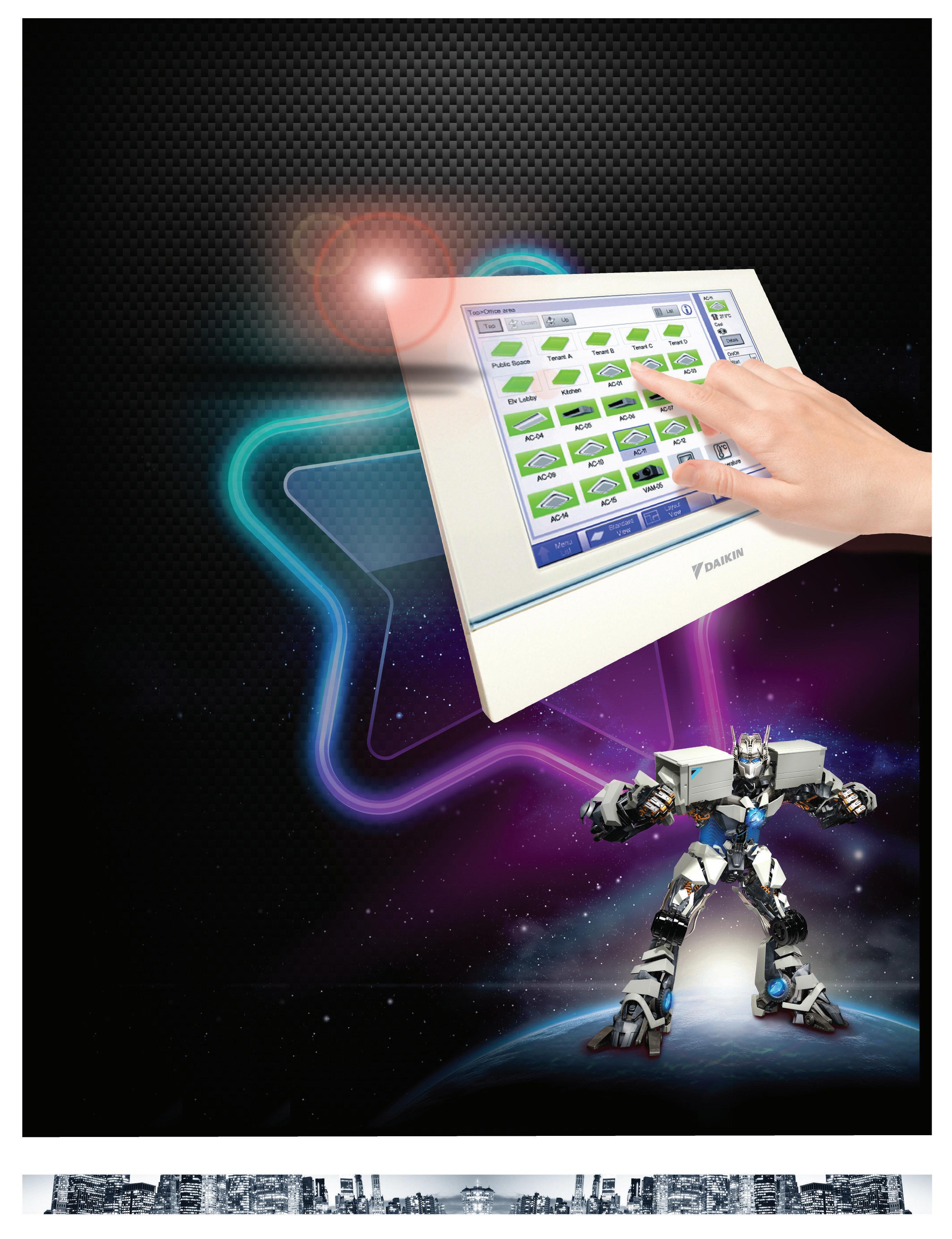





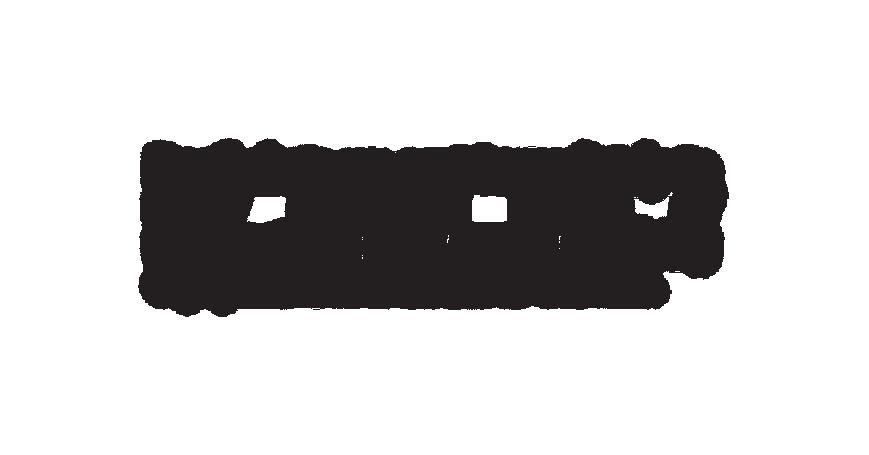
reported by

The speaker, Ir. A.H. Ung started with an overview of various thermoplastic piping materials which are currently in use in internal hot and cold plumbing works and highlighted their different characteristics and joining methods.
He said there are currently two reference Standards for the manufacture of PPR pipes and fittings: ISO 15874 parts 1-7 and MS 2286 parts 1-7. He focused mainly on ISO 15874 (the Standard) as MS 2286 is adopted from the former.
The Standard adopts the “S” Series and Design Pressure to determine the working pressure of the PPR piping system. This differs from conventional methods such as the widely used Nominal Pressure (PN) rating. Both pressure rating systems were compared and shown how they can be related to each other.
In addition, the Standard also classifies PPR pipes and fittings in 4 different Application Classes as follows:
From the above, it is evident that not all PPR pipes and fittings are the same, even though the manufacturers adopt the same reference Standard, ISO 15874. The different application classes also yielded different test parameters for the respective application classes and these were highlighted in the presentation.
Apart from the many tests required for both the PPR pipes and fittings as separate components, the Standard also requires the pipe and fitting to be joined as a single test assembly for the Fitness For Purpose or Joint Test.
One of these, the Thermal Cycling Test, is tedious, time consuming and expensive. The joints have to be subjected to alternating temperature of 90oC for 15 minutes and 20oC for another 15 minutes at a constant design pressure. This constitutes one cycle and the test requires 5,000 cycles or 2,500 hours to complete.
The test must also be conducted for all diameters and design pressures. For example, if a manufacturer has 10 diameters (OD 20 to 160) and 3 design pressures (4, 6 & 8) of pipes, there are a total of 30 test assemblies to be tested!!
Since Sirim QAS does not have the facility to conduct this test, Azeeta Pipe System Sdn. Bhd. has designed and built the first and only Thermal Cycling Test Facility which has been approved by Sirim QAS.
5High

reported by


On 22 September, 2016, a Half-Day Course on Heat Recovery System: Heat Pump - Hot Water System for Hotel & Hospital, was organised for 30 participants, including 3 committee members of the Building Services Technical Department, IEM.
ThecoursewaspresentedbyMr.TeeToneVei,Managing Director of Intrix Renewable Sdn. Bhd. who explained about the Decentralised and Centralised Hot Water Systems and the various traditional energy sources for generating hot water, such as solar, boiler and electrical heater.
Heat Pump (HP) concept and technology is well known but according to Mr. Tee, it is a challenge to achieve the highest possible energy efficiency which will result in the reduction of CO2 emission to the atmosphere.
He said the concept is based on the 2nd law of Thermodynamics where free and renewable heat energy is harvested from ambient air or heat rejected from chillers at lower temperatures and turned into useful heat by adding a small amount of energy.
There are three main heat sources for HP operation in tropical countries:
1. Ambient Air (5oC-35oC)
2. Chilled Water (7oC-12oC)
3. Cooling Tower Water (30oC-35oC).
Mr. Tee then clarified the Myth of COP as a constant factor in a system as this was unattainable due to the dynamic nature.Heexplained:“Theenergyefficiencyofaheatpump system is measured by Coefficient of Performance (COP), which is derived from Heat Output divided by Electrical Energy input. However, the common myth that COP=4.0 is highly misleading because COP is never a fixed value but a fluctuating ratio value instead. The higher the heat source temperature (i.e. ambient temperature), the higher the COP will be. The higher target output temperature (i.e. hot water temperature), the lower the COP will be. During system operation, this ratio value is dynamic, therefore COP value is also never constant. In fact, not only is COP
dynamic but the corresponding output capacity also varies corresponding to the two parameters. It is therefore very important to consider these parameters to design or specify a system to ensure optimum energy efficiency. In fact, a carefully designed system with consideration of the two mentioned dynamic parameters can achieve approximately 95% of equipment efficiency.”
Mr. Tee then explained the different HP systems using numerous re-circulations to reach the desired water temperature and One Pass technology, which is a more energy efficient method because it enables one-time water heating to reach the target temperature. This system is capable at maintaining a high COP at all times.
HP is a known Green Technology. Mr. Tee presented a chart comparing the annual CO2 emission from various methods of generating hot water. HP (air/water-source) has the lowest emission. He then showed pictures of an actual installationattheFirstWorldResort&HotelinGenting,which uses the Intrix HP hot water system. This has successfully reduced 1,000 metric tonnes of CO2 generated annually by using air source heat pump technology, an amount that needs roughly 45,000 trees to soak up. The project has gained recognition and is listed in the Malaysia Book Of Record as “The Largest Renewable Energy Hot Water System” in the region.
Title: 3-Day International Joint Workshop Weld Fatigue Assessment and Life Extension Technique on Structural High Strength Steel
26 - 28 September 2017
Joint workshop : Mechanical Engineering Technical Division (IEM), AMTEX (UiTM), UniKLMFI, Montan Universitaet Austria, Mercu Buana University and Tecnogerma
Time :9.00a.m.-5.00p.m.
Venue :HotelUiTMShahAlam
CPD/PDP :19.5
Kindly note that the scheduled events below are subject to change. Please visit the IEM website at www.myiem.org.my for more information on the upcoming events.

The IStructE Malaysia Regional Group Young Structural Engineering Professional Award 2017 is now open for entries to Engineers residing in Malaysia.
We want to promote the accomplishments of YOU, the young structural engineers – showcasing the diverse and skilled individuals who are drivingtheprofessionforward.Winningtheawardisauniqueopportunity to be marked out as “one to watch” among the Institution’s global membership, and an internationally recognised mark of achievement in structural engineering.
Structural engineering is an exciting career and that is why winners of this award have the opportunity to act as an ambassador for the Institution and the profession – showcasing the crucial role engineers play in shaping the built environment and providing identiiable role models for young people interested in engineering.
The scheme is open to Engineers Registered with the Board of Engineers aged 30 years or under. To enter the competition, complete your submission and send to: The Honorary Secretary, IStructE Malaysia Regional Group at “istructe.md@gmail.com” by midnight Thursday, 30 November 2017

THE SUBMISSION MUST INCLUDE:
• 250 word opinion piece on what structural engineering means to you.
• Posterpresentation. You may submit up to four posters in pdf format (A1 size) about three projects (with consent of the employer) that you have been involved in. The posters should show the technical aspects of the design, and also shout about your own input into the project. It is up to you to decide how you split up the posters – focus more heavily on one project or equally across the three.
• Video recorded presentation (max. 5 minutes). At the end of your presentation, please answer the question “what does structural engineering mean to you?” (This is based on your opinion piece and should last no more than 20 seconds).
• Curriculum Vitae.
Entries will be reviewed by the judging panel against the following criteria:
I. Creativity and originality
I. Personal involvement on one speciic project
II. Knowledge of structural engineering and the profession
III. Quality of written and verbal communication
IV. Clarity of presentation
The winner shall be awarded with a prize value worth of at least RM 2,000
BUILDING SERVICES TECHNICAL DIVISION
reported by

On 11 June 2016, 21 participants, including 3 committee members of the Building Services Technical Division, made a visit to a grease trap manufacturer, VTSB Trading.
The 3 speakers – Peter, Eric and Toh – talked about the company profile, technical aspect and design of grease trap and installed systems.
There is a clear distinction between Fat, Oil and Grease (FOG) and each requires using a different type of trap. Food & Beverage (F&B) outlets and wet markets discharge grease and fat while a bus terminal that services buses and car workshops will discharge oil. The local councils have made it mandatory for all these establishments to install FOG traps to get or renew licences for their premises.
It is recommended that Grease Traps or Grease Interceptors (GI) be installed below the wash basins in all F&B outlets. The installed GI is able to remove 99% of the fat with the help of enzyme dozing but the discharge from the GI still contains grease in excess of the Influent Standard of Sewerage Treatment Plant (STP) [refer to extract from “Malaysian Sewerage Industry Guidelines, Section 3 – Sewerage Characteristics and Effluent Discharge Requirements”].
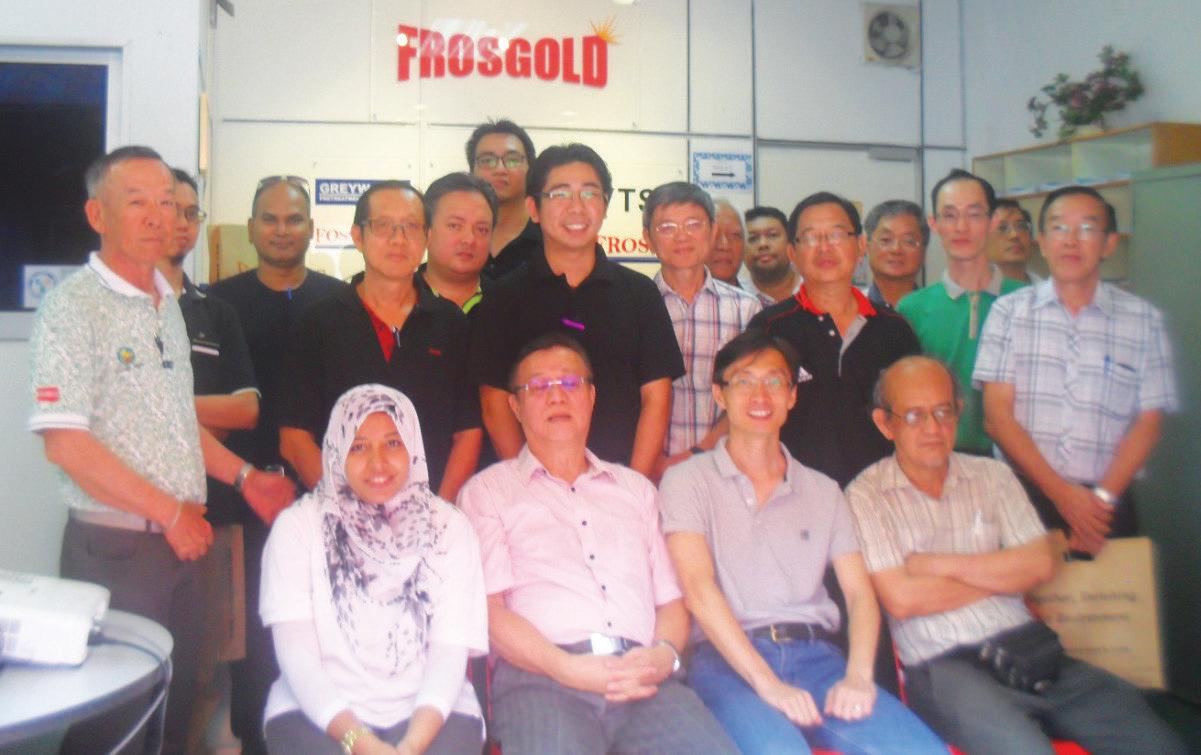
Table 3.1 tabulates the design inluent values to be adopted in the design of a treatment plant.
Biochemical Oxygen Demand (BOD5) 56250
Suspended Solids (SS)68300
Chemical Oxygen Demand (COD) 113500
Total Nitrogen (TN)1150
Ammoniacal nitrogen (AMN) 730
Total Phosphorus (TP) 210
Oil and Grease (O&G)1150
So, the discharge from the GI must be diverted to a centralised tank where it undergoes a Pre-Treatment Process (PTP) to bring down the effluent level so as to meet the above influent guidelines. A few F&B projects were mentioned where PTP was not done and the discharge was diverted directly to the Indah Water manhole. Retrofit works were then carried out.
PTP is like a scaled-down waste water treatment plant where the key effluents (grease and fat) are removed. The size of the PTP varies according to the flow rate of the discharge. In one shopping mall for instance, an installation measured 6m x 28m x 6.3m (ht).
After the briefing, the participants visited the factory to see the manufacturing processes. The presentation and visit ended with a buffet lunch hosted by VTSB Trading.
NOTE: Engineers should be mindful of social responsibility to the environment and ensure that all FOG generated from their project environments are addressed accordingly and that the discharges are within the stipulated guidelines.


A global company, with more than 70 subsidiaries in 5 continents, with an on-site presence in more than 100 countries: we are highly-specialized professionals trained in designing and developing complex solutions in the civil engineering, geotechnical and environmental construction markets. We are strongly committed to solving our clients’ problems by providing better solutions through attentive innovation and collaboration.

www.maccaferri.com/my



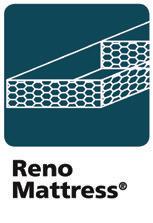
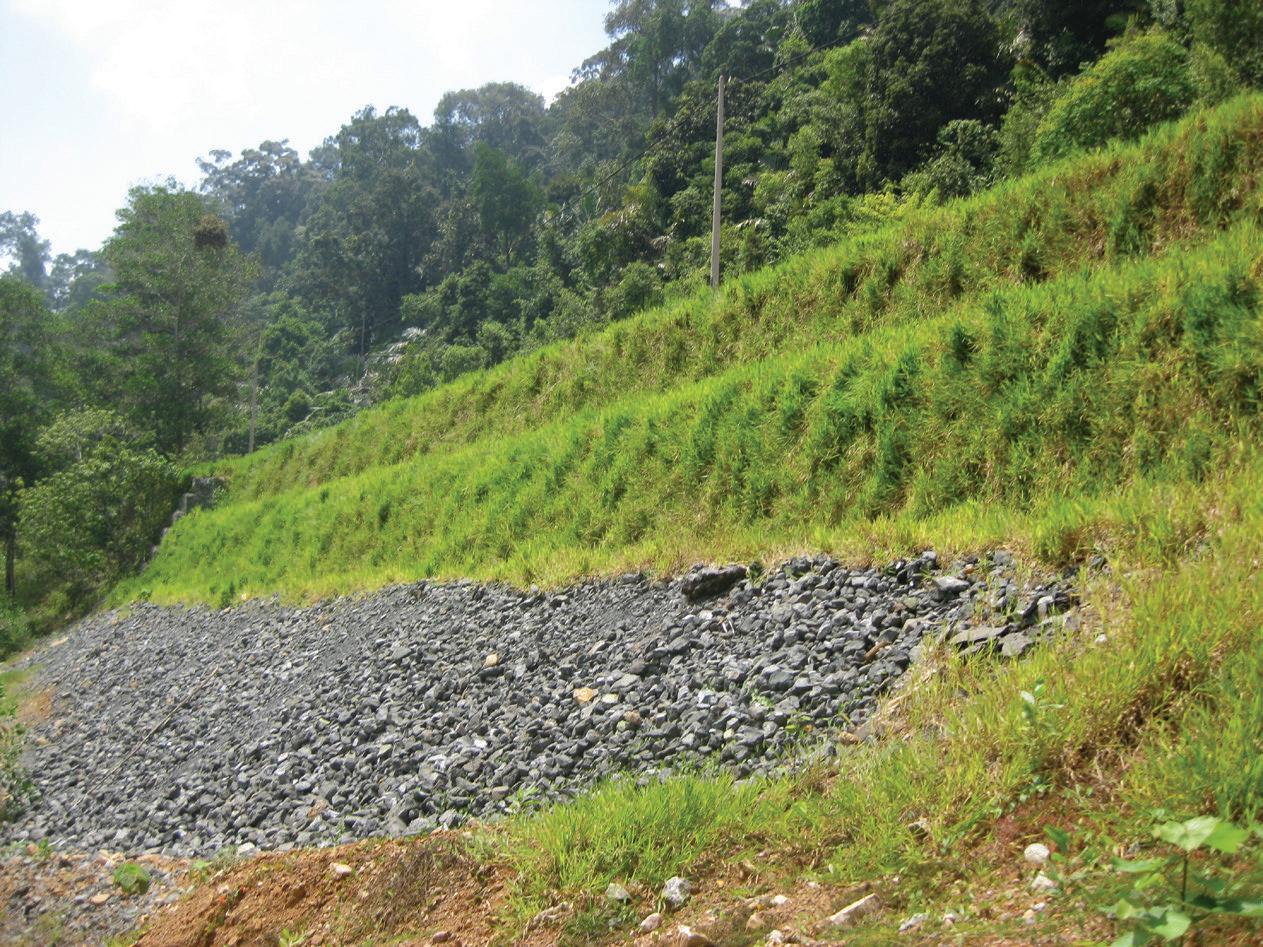




IEM BUSINESS CLUB
reported by


The market place today is gender-neutral and, rather than projecting yourself as a woman, project yourself as a capable person instead. This piece of advice came from the chairman of Airasia X Bhd., Tan Sri Rafidah Aziz, who was more popularly known as the “Iron Lady” during her term as Minister of International Trade and Industry.
“Nobody asks ‘Is this a woman’s company?’,” she said. In her trademark mixture of wit and candour, she delivered the first of a series of CEO Talks organised by IEM Business Club (a sub-committee of the Standing Committee on Welfare & Services Matters) and Women Engineers Section.
The talk was chaired by Ir. Elias Saidin, IEM Vice President and Chairman of the Standing Committee on Welfare & Services Matters. He also delivered the welcome speech.
Held at Wisma IEM Petaling Jaya, Rafidah’s talk on “Insights Into the Corporate World” drew a packed auditorium of more than 100 engineers, including many IEM council members on 29 April 2017, although it was the start of the long Labour Day weekend.
Since the existence of the first male gynaecologist, the gender barrier has broken down. “Glass ceilings and weaker sex are inane concepts that many women use,” said Rafidah who urged women to get rid of the “buts” as an excuse that women can’t do something and become more than just quota fillers. This drew laughter and applause from the mainly (87%) male audience.
There are many talented and capable women in many areas today and they should be evaluated based on competence, capability and merit. Gender quotas render illegitimate the hard work and talent that make many women successful today. These women are successful for reasons other than the fact that they’re women, and the quota system discounts that.
To succeed today, women must be in a constant state of adaptation, continually unlearning old “rules” and learning new ones. This definitely holds true for Rafidah, who has shown us that life does begin at 73, the age that she became a certified open water scuba diver.


Furthermore, society should also respect women’s personal choices when it comes to family and career. Here’s a thought to ponder over, that one of Malaysia's most iconic female leaders attracts more men than women in the audience. Is it because engineering still a largely male-dominated field in our nation or is it because women have different priorities?
In the corporate world, the key elements for success in business are potential, tools and support system. It’s very important for leaders to walk the ground and have a horizontal perspective of the value chain as well as walk every step involved in the process. Malaysian companies should strive to be the “best in class” by global standards instead of being overly obsessed with the “jaguh kampung (village hero)” mentality, said Rafidah who quoted from Chubby Checker’s 1962 hit single, Limbo Rock: “How low can you go?”.
On motivation, it can be thought of as the willingness to move things forward, an important factor for innovation. Innovation itself can be either incremental (improving on a daily basis) or radical (inventing completely new products

Audience during the Q & A session or services that disrupt the market). Rafidah stressed on the importance of engineers in meeting the demands of the agenda for sustainability in current and future development. In the aviation industry, airline and aircraft manufacturers have already taken various steps to leave a much smaller carbon footprint, she added.
The triple bottom line for 21st Century business focuses on “Profit-PeoplePlanet”. Workplace insecurity, discrimination, child labour and human trafficking must be eradicated through sustainable solutions. Businesses must operate using environmentally sustainable practices to gain a competitive advantage in the market. Consumers today have different expectations and they are more connected and more empowered than ever before.
Many businesses fail today because of “no risk management” in place. “In the corporate sector, no matter how smart a company is, it must have risk management,” said Rafidah.
She explained that integrity is vital for the corporate sector to survive. She talked about the differences between entrepreneur (person) and enterprise (business). To be a successful entrepreneur, integrity is pivotal and it’s one of the basic ingredients, along with honesty, a high sense of responsibility and accountability. Integrity is one of the top attributes of a great leader. It is the concept of consistency of actions, values, methods, measures, principles, expectations and outcomes.
Many engineering failures – such as when bridges collapse, ships sink and apartment buildings tumble – stem from a lack of integrity in today’s society which is constantly on the quest for more profits and personal gains. Engineers should always hold integrity and honesty to be of the utmost importance.
As for leaders, Rafidah said leadership by example is important. Leaders must have the ability to galvanise their team as it takes a team to realise a vision.
And for the enterprise, a thorough SWOT (Strengths, Weaknesses, Opportunities and Threats) analysis will help businesses reach the next level.
Rafidah is much loved for her forthright opinion and wit. She continued to charm the audience during the Q&A session. Her criticism of feminism and gender quotas are nothing new. She believes women should be considered for their competence and abilities, where meritocracy will ensure inclusiveness, regardless of gender and ethnicity.
In her closing remarks, Ir. Suhana binti Abdul Majid, Vice Chairman of Women Engineers Section, expressed her thanks to Rafidah.
Attheendofthetalk,IEMDeputyPresidentIr.DavidLaipresentedRafidah with a token of appreciation.
The first in the CEO Series of Talks was a huge success and attracted more participants than the IEM auditorium could accommodate. It also set the tone for the next talk.
Malaysian Standards for Cable Connectors
Various cable lugs and links are imported into Malaysia but these connectors have been found to be inferior as they differ in dimensionsandmaterialspecifications.
To prevent widespread usage of inferior connectors, Malaysian Standards have been developed to standardize the dimensions of connectors and crimping dies.

MS 1540:2015
Crimp Type Cable Lugs for LV Applications Published Malaysian Standards
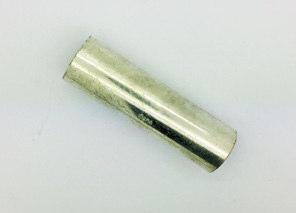



MS 1779:2005
Crimp Type Cable Links for LV Applications
MS 1838:2005 Crimp Type Cable Lugs for Applications up to 36kV
MS 2584:2014
Crimp Type Bi-metal Lugs for Applications up to 36kV
MS 2654:2015
Crimping Type Hexagon Dies and Rounding Dies
Always go for standards-compliant and quality cable connectors to conduct current safely and realiably.
Today there are five publications related to connectors and these standards can now enable owners, engineers and end-users to specifyrightconnectorsfortheirneeds. Download at: https://aspiremore.sendlane.com/view/techpaper
www.conway.com.my
reported by



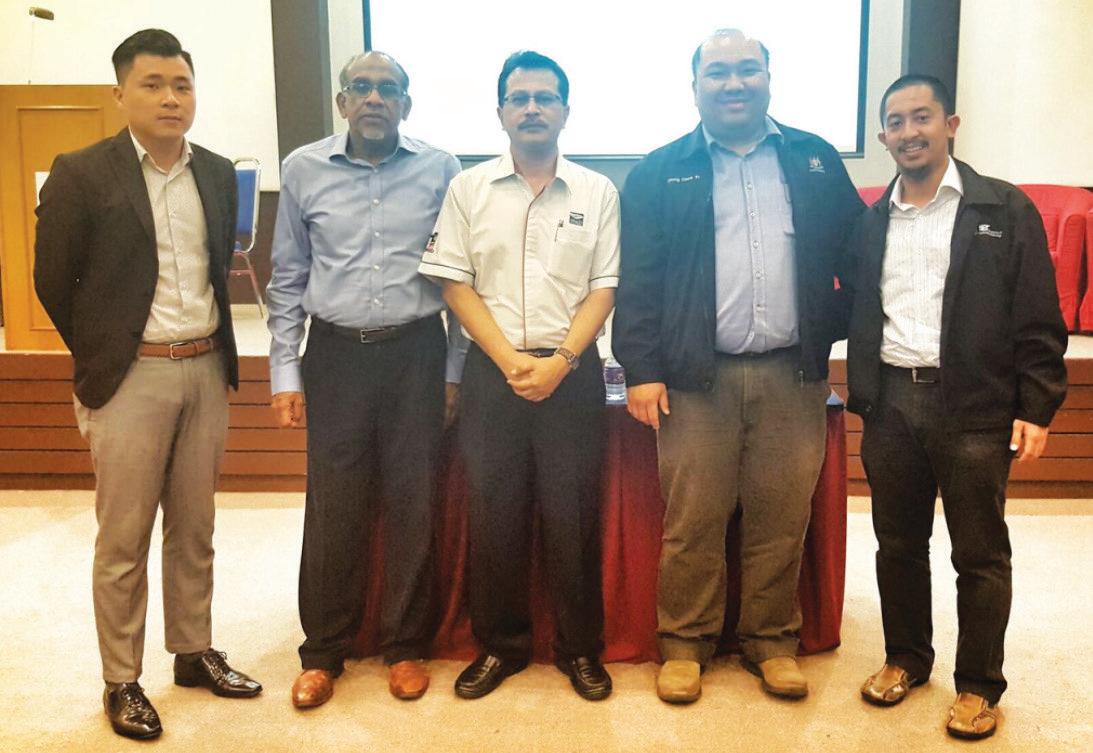

IEM’S Electrical Engineering Technical Division (EETD), with the cooperation of the Institution of Railway Signal Engineers (IRSE) – Malaysian Section, held a “One-Day Workshop on Railway Electrical System” on 24 May, 2017, at Wisma IEM, Petaling Jaya, followed by a “One-Day Seminar on Railway Electrical Systems for LRT/MRT Projects in Malaysia” on 25 May.
The workshop had 51 participants while the seminar had 7 invited speakers and 76 participants. They were from the regulatorybody,academicinstitutions,railwayindustryand other related industries.
The workshop started with Ir. Dr Amir Basha Ismail’s presentation on EETD: Railway Electrical Systems Working Group on traction power system designs for AC and DC railways in Malaysia, followed by the fundamentals of train propulsion systems where the working principles of the induction motor and train motion kinematics were explained.Heillustratedtheuseoftractionpowersimulation
software to assess the performance of rail traction loads on public utility (TNB) electrical power supply system.
After this, Prof. Ir. Dr Au Mau Teng from Institute of Power Engineering, Universiti Tenaga Nasional (UNITEN) presented the power system study on railway traction loads to assess the impact of traction loads in term of power quality, adequacy, reliability and safety. He showed the harmonics emission from traction loads and proposed correction measures such as the use of harmonic filter to mitigate harmonic voltage distortion to a permissible level.
In the third part, Dr Ajeet Kumar Pandey from L&T Technology Services spoke on the importance of Reliability, Availability, Maintainability and Safety (RAMS) management for better quality service. He also talked aboutElectromagneticCompatibility(EMC),explainingthe sourcesofElectromagnetic(EM)emissionsandEMzoningin railway environments.
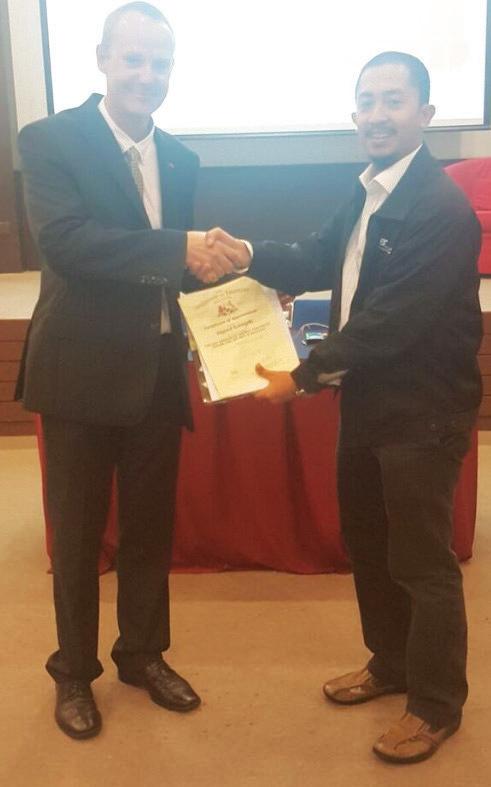
technical safety-critical or safety-related work on signalling and railway telecommunications equipment and systems.
Next,Mr.BassamMansour(alsofromIRSE)presentedthe3rdand4thpower rail systems for D.C. electrified railways. The two systems and applications were illustrated and a comparison made between them.
Ir.DrAmirBashaIsmailpresentedacasestudyonthedesignrequirements of power supply and traction power system for a 750V DC rail transit project. The traction power modelling and simulation were used to assess the performance of rail traction loads in the design and operation of a railway infrastructure project.

Then Ir. Dr Aziz Marzuki bin Ahmad Marican from Diagnostic Consultancy & Services gave a brief introduction to earthing, followed by a case study on earthing system analysis for a Light Rail Transit project.
“Traction Power Receptivity for Train Braking Regenerative Energy Recovery System” was the topic choice for Mr. Wojciech Kolomyjski of ABB (ASEA Brown Boveri) Inc. This covered the description of IGBT (Insulated-Gate Bipolar Transistor) Inverter, Energy Storage System and Thyristor Inverter.
The last speaker, Dr Ajeet Kumar, presented “Systems Assurance for Urban Railway Operation”, a management approach that ensures systems are designed and developed to meet specified RAMS & EMC requirements. Using a case study, he illustrated the System Assurance implementation and RAM apportionment in MRT/LRT projects.
Title: Talk on “Design of Slender Tall Buildings for Wind and Earthquake”
5 September 2017
Organisedby :CivilandStructuralEngineeringTechnicalDivision
Time :5.30p.m.-7.30p.m.
CPD/PDP :2
Kindly note that the scheduled events below are subject to change. Please visit the IEM website at www.myiem.org.my for more information on the upcoming events.
reported by Ir. Ellias Saidin Chairman of IEM Engineering Week 2017, Standing Committee on Welfare & Service Matters

In 1951, the National Society of Professional Engineers (NSPE) in the USA, launched National Engineers Week to coincide with President George Washington’s birthday on 22 February.
George Washington was considered the first engineer in America and he was highly recognised for his engineering survey works. He became a professional surveyor at age 17. At that time (1749), surveying was a respectable occupation, one that was on par with law, medicine, the church or military service.

The purpose of National Engineers Week is to recognise the contributions that engineers make to society and to highlight the importance of science, technical skills and mathematics. Spearheaded by NSPE, the annual celebration is endorsed and supported by 70 engineering societies and 50 corporations, with events and activities organised by schools, businesses and communities to motivate young people to pursue careers in engineering.
awareness of and enthusiasm for the engineering profession. Engineers in Ireland have a programme called STEPS (Science, Technology and Engineering Programmes for Schools), working with Science Foundation Ireland to promote STEM careers to post-primary students. This year (2017) will be its 12th annual nationwide celebration of Engineering Week.
In Australia, Engineering Week will be held on 3-10 August 2017 with national and international engineers attending events throughout the country. Engineers Australia also supports National Science Week and encourages its members to coordinate their own events besides participating in the activities being held.
The aim of National Science Week is to increase awareness of and to provide a better understanding of the role of science, technology and innovation in everyday life and our future. It is a great opportunity to celebrate the significant contributions that engineers make to society.

In Africa, Engineering Week was launched on 1-5 September, 2014, at the University of Johannesburg. Thissawaseries of educational activities in schools across Africa to encourage students to enroll in the STEM curriculum and to highlight the need for diverse engineers to achieve Sustainable Development Goals.
UNESCO supports the activities of UNESCO Africa Engineering Week, which is aimed at increasing the visibility of engineering and the role of engineers in sustainable development as well as to encourage more students to study engineering by supplementing primary/secondary curriculum with hands-on engineering activity kits. Educational, public awareness, university and mentoring activities are held throughout the African continent during the week.
In Ireland, nationwide events are held during Engineers Week where organisations, schools, universities and education centres hold activities to create greater

Engineers Canada holds its annual National Engineering Month in March with over 500 events hosted by the provincial and territorial engineering regulatory bodies.
Young Canadians can learn more about the exciting and rewarding careers in engineering while engineers share more about the various disciplines so that youths can see what will suit their skill set and interests. The youths can then pick the discipline that motivates and excites them the most. Parents, teachers, students, aspiring engineers and engineers also get involved as volunteers.
• It provides an opportunity for youth to learn about engineering.
• It helps kids understand the various things they can do as engineers.
• It can teach youth what it takes to become a professional engineer.
• It helps to profile for youth the accomplishments of Canada's engineers.
In India, the Council of the Institution of Engineers (India) observes Engineers Day on 15 September, the birthday of Engineers Canada National Engineering Month is in March
Bharat Ratna Sir Mokshagundam Visvesvaraya (1861-1962) who was recognised as a wizard in engineering.
The 16th annual Egyptian Engineering Day, organised by the IEEE Young Professionals (YP) Egypt Section, is a shared hub for exchanging best practices and new ideas which promote both engineering science and profession. Graduating students also get the chance to market their projectsandtoexplorethelatesttechnologiesandsolutions which fit the current market needs.
In 2012, IEM held a competition titled “Engineering Invention and Innovation Exhibition” (EINIX) where university students were encouraged to showcase their innovations and inventions. For the first competition, unlikely inspirations included worms, motorcycle accident statistics and rising electricity bills. The winning team from Universiti Teknologi Petronas used the vermi composting process to generate energy in its Vermi Battery. The competition is now an annual event.

For the Institution of Engineers Singapore (IES), the 8th National Engineers Day (NED) in July 2017, celebrated the achievements of engineers, inspired young engineers and intrigued the youngergeneration.Therewerefunandenrichingactivities which demonstrated the ingenuity of engineers and the many career possibilities in engineering. NED has grown to become the largest engineering festival in Singapore for students.
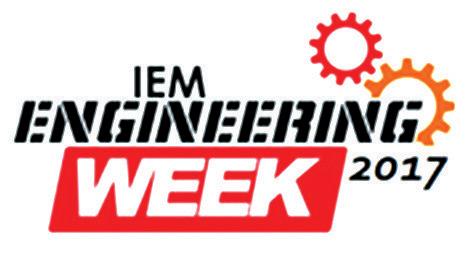
In Malaysia, the first IEM Engineering Week (initially named IEM Engineers Week) was held on 14-19 October, 1996. The event was launched by the-then MinisterofEnergy,TelecommunicationandPosts,Dato’Leo Moggie. The week-long programme, carried out at the IEM HQ as well as branches nationwide, comprised career talks at schools, an exhibition, Radio and TV talk shows and Press coverage.
IEM Engineering Week represents our continuing efforts to enhance the image of the profession among the community. Over the years, the programme had focused on promoting the profession and creating greater awarenessofthecontributionofengineersinnationbuilding to the public, including children. Activities such as talks on careers in engineering were held in secondary schools, engineering-related games were held in primary schools and open forums on engineering as well as exhibitions were organised nationwide.

IEM has also introduced IEM Engineers Run to promote healthy living as well as interaction between engineers and their families. There were only 200 participants for the inaugural event but today, this has grown. It is now not only held at HQ level but at various IEM Branches which are organising their own runs. In Sarawak last year, the event saw 2,000 runners taking part.
For its 22nd consecutive Engineers Week 2017, IEM has aptly picked the theme, “Engineering The World For A Better Future”. The week-long programme will aggressively promote engineering and its various aspects, including challenges, professionalism, exciting work environment and wide career options.
This will allow Malaysians to understand and appreciate better how the profession can help provide them with higher standards of living. The target audience for these strategies would be parents, teachers and students.
With Engineering Week being celebrated annually around the world, IEM proposes holding an annual National Engineers Week in Malaysia, in collaboration with associations, institutions, corporations and schools to encourage youths to select a career in engineering, technology and science.

http://en.unesco.org/events/engineering-week-africa https://www.nspe.org/resources/partners-and-state-societies/ national-engineers-week http://www.engineersweek.ie/ http://www.unesco.org/new/en/unesco/events/prizes-andcelebrations/celebrations/international-weeks/unesco-africaengineering-week/ https://unesco4africaengineering.crowdmap.com/ https://www.ieindia.org/engg_day.aspx http://www.ned-ies.org/index.html

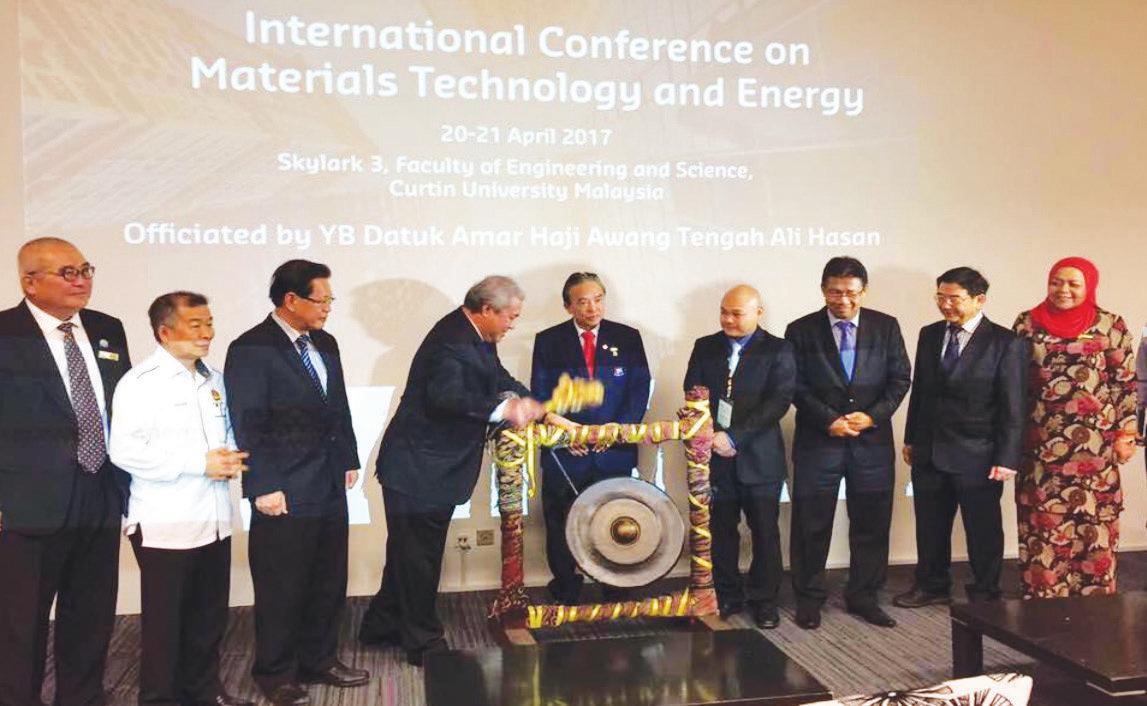
The International Conference on Materials Technology & Energy 2017 (ICMTE 2017) was held for the first time in Sarawak at Curtin University Malaysia on 21-23 April, 2017. There were over 100 delegates from countries such as Canada, India, China, Indonesia, Singapore, Australia, Germany and Malaysia. They included scholars, researchers, industrial professionals and practitioners in the fields of Materials & Corrosion Engineering, Welding Technology, Green Technology, Health & Safety and Energy.
The three-day conference was jointly organised by The Institution of Engineers Malaysia Miri Branch (IEM-Miri), Institute of Materials Malaysia Miri Regional Chapter (IMMMiri) and Curtin University Malaysia. The conference was
financially sponsored by Sarawak Energy Berhad (SEB) and Sarawak Convention Bureau (SCB), and supported by the Miri City Council (MCC). The conference also enjoyed the honour of Institute of Physics United Kingdom (IOP) as partner publisher for its conference proceedings.
Officiating at ICMTE 2017 was Datuk Amar Haji Awang Tengah Ali Hassan (Second Minister for Resource Planning & Environment and Minister for Industrial & Entrepreneur Development, Trade and Investment, Sarawak). Also present were Datuk Lee Kim Shin (Assistant Minister for Land & Air Transportation and Safety and Assistant Minister for Tourism, Sarawak), Datuk Haji Julaihi bin Haji Narawi (Assistant Minister for Rural Economy – Coastal Areas & Fisheries,
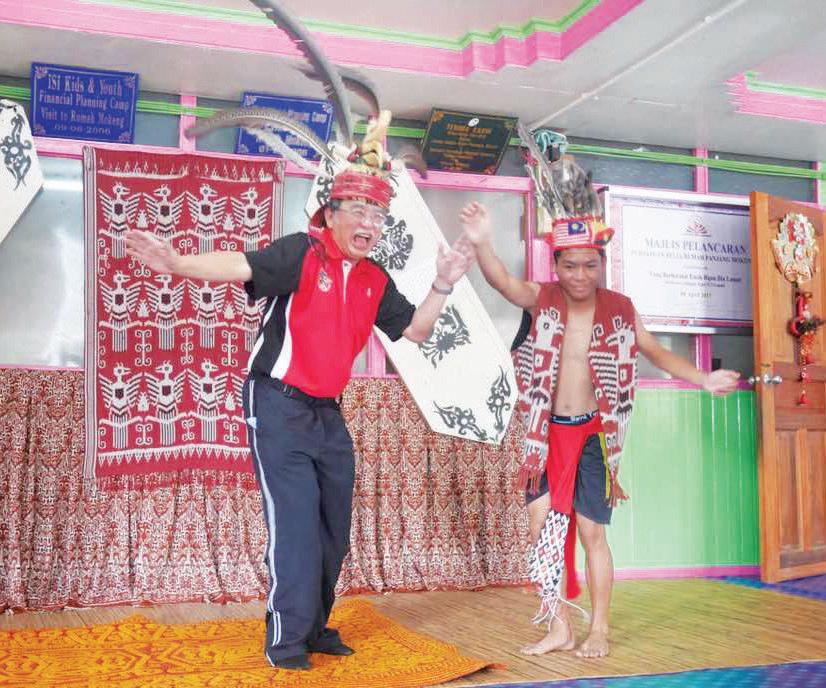
Sarawak and Assistant Minister for Industrial Development, Investment & Promotion, Sarawak), Datuk Haji Mohd. Naroden bin Haji Majais (Assistant Minister for Resource Planning and Assistant Minister for Entrepreneur Development, Sarawak), Puan Sherrina binti Hassaini (Miri Resident), Datuk Bandar Adam Yii Siew Sang (Miri Mayor), Ir. David Lai Khong Phooi (Deputy President, IEM), Encik Mohd. Azmi Mohd. Noor (President of Institute of Materials Malaysia), Prof. Clem Kuek (Dean of Research & Development and Director of the Curtin Malaysia Research Institute) and Assoc. Prof. Vincent Lee Chieng Chen (Organising Chairperson of ICMTE 2017).
The 5 international keynote speakers were:
1. Encik Mohd. Azmi Mohd. Noor on the essence of asset integrity management in ageing offshore production facilities.
2. Prof. Rolf Gubner (Professor of Corrosion and Deputy Director, Advanced Learning of Curtin Corrosion Engineering Industry Centre) on the importance of onshore and offshore corrosion management system.
3. Ir. Pau Kiew Huai (CEO of PETRONAS LNG-Malaysia) on the overall view in managing MLNG facilities and the challenges to the Malaysian economy.
4. Mr. Sharbini Suhaili (CEO of Sarawak Energy Berhad) on the advancement and successful transformation of greener and economical Sarawak energy.
5. Mr. Simon Ong (Managing Director of Shell Global Solutions Malaysia) on the continuous global challenges in deepwater exploration and production.
Participants said the conference had provided them with an effective platform for international networking and exchanging of technical ideas, knowledge and information on developments and innovations in the fields of materials engineering, green technology and energy, particularly ecofriendly and long-term sustainable solutions in structures, materials and manufacturing as well as the environment, energy and resources.
ICMTE 2017 created linkages and cooperation between academia and industry. It offered innovative solutions for the materials technology and energy industries in all sectors. In developing countries such as Malaysia, these sectorsplayanimportantroleinnationaldevelopmentandthedissemination of cutting-edge technology and research is important.
The parallel oral presentations covered various key research areas such as materials engineering, welding technology, asset integrity management, corrosion engineering, drilling and production, inspection techniques, shipbuilding, applications in oil and gas, oleochemical, petrochemical, renewable energy, wastewater treatment, produced water treatment, cleaner production technology, petroleum geology and hydro/solar power generation. All accepted full papers at this conference will be published in IOP Conference Series: Materials Science and Engineering.
The three-day conference ended with a one-day trip to Niah National Park. Participants went on a jungle walk, an Iban longhouse tour and visited caves. The park was a major settlement as early as 40,000 years ago. It features one of the world’s largest cave entrances, palaeolithic and neolithic burial sites, and iron-age cave paintings. n
We are a supplier of high quality geosynthetic products used for soft soil stabilization, slope reinforcement, coastal erosion protection, river bank protection, landfills, drainage, road and railway construction.
Our Products:
NEXTILE NON-WOVENS
NEXFORCE HIGH-STRENGTH WOVENS
NEXGRID GEOGRIDS
We also provide design, specification, bill of quantities, cost estimate and drawings free-of-charge.







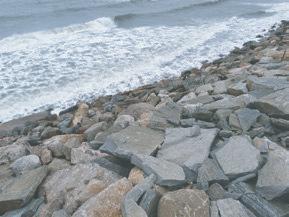
Get in touch with us: Tel: 03-6142 6638 Fax: 03-6142 6693 sales@neusynthetics.com
Sales Team: Gordon (012-355 0872)
A Nehemiah Group of Companies www neusynthetics com
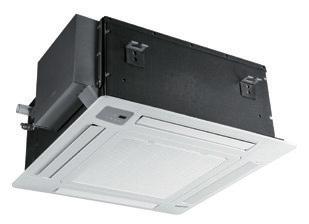
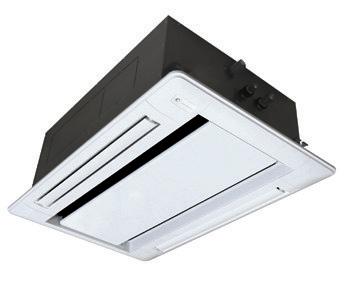











MIr. Chin Mee Poon www.facebook.com/chinmeepoon
Ir. Chin Mee Poon is a retired civil engineer who derives a great deal of joy and satisfaction from travelling to diferent parts of the globe, capturing fascinating insights of the places and people he encounters and sharing his experiences with others through his photographs and writing.
an’s perception of beauty changeswithtimeanddiffers from location to location.
In the West, the prevailing standard of beauty in a woman is tall and slender but busty with delicate features, perhaps best epitomised by actress Marilyn Monroe. During the Victorian period, however, plump women were considered beautiful, as exemplifiedbyQueenVictoriaherself.
A certain minority ethnic group in China believes that, in women, a prominent derriere is associated with reproductive capability and therefore, is most beautiful.
The long-necked Karen women of Myanmar and Thailand wind copper tubes around their necks to make them look longer, which is said to increase their charm.
However, whatever yardstick one may adopt to gauge beauty, it is ultimately the beholder’s feelings that really matter.
Many years ago, the National Museum in Kuala Lumpur staged a special exhibition on beauty as envisaged by different societies of the world. I was particularly fascinated by the women of a certain African tribe who slit their lower lips and then insert round ceramic plates to enhance their attractiveness; it seems the larger the plate, the more attractive they appear to be!
That was my first acquaintance with the lip-plate people.
While planning the second part of my trip to Ethiopia last year, I was delighted to learn that the lip-plate people actually came from the southern part of that vast country.
In Ethiopa, I chartered a 4WD vehicle with driver to take my wife

and I to all the places in our itinerary. Then on 16 October, we finally came face to face with the lip-plate people in the tiny hamlet of Butena in Mago National Park near Jinka in the lower Omo River Valley.
We had to engage a guide from the Guides Association in Jinka, pay National Park entrance fees for the two of us and the vehicle, and pay entrance fees again to visit the hamlet. All these amounted to a total of 1,084 birr (about RM108). We also hadtopaythevillagers5birrperhead if we wanted to photograph them!
Myinitialexhilarationwasthwarted somewhat, but upon deeper reflection, I was convinced that this, perhaps, was the best way the local people could directly reap benefits
from the tourism industry. Usually, tourist spending goes largely to tour companies in big cities and hardly anything filters down to the very people who attract the tourists in the first place.
However, when the headman, a young man who had been to England and who spoke pretty good English, was trying to show me around the hamlet and how his people lived, many women and children kept following me around and pulledonmysleevetoask me to photograph them. Some men did the same too. They were so poor I reckoned that even 5 birr meant something to them. But this was not the kind of interaction I had expected from such an isolated community that many people might not have even heard of.
The lip-plate people are the Mursi, a pastoralist ethnic group with a total population of only about 7,500 people, according to Ethiopia’s 2007 national census. They live in small, cone-shaped thatched huts and practise polygamy. The hamlet headman I met had 3 wives and 4 children. When the girls reach the age of 15-16, they slit their lower lips to hold a round ceramic or wooden plate. As they grow older, their lower lips become more stretched to hold larger discs.
Yes, I was grateful to have finally met the lip-plate people, but this was one experience I really did not cherish.
Yes! I would like to be a subscriber of The Institution of Engineers, Malaysia’s publications
Name: _________________________________________________________________________________________________________
Mailing Address:_________________________________________________________________________________________________
Country: ________________________
Company/Institution:______________________________________________________________________________________________
Title: ____________________________________________________________________________________________________
Telephone No: _________________________ Fax: _________________________ Email: _________________________________
New Subscriber Renewal
Please commence my subscription from: _________________________(month/year) Signature: _______________________________
To start your subscription of IEM’s publications, complete this form and mail it back to the address below. For faster processing, fax it to: +603 7493 1047. Thank you.
What is your primary job title?
Corporate Management (including chairman, president, proprietor, partner, director, vice president, general manager, division manager, import/exportmanager,othercorporatetitle)
Management (including project/contract/equipment/service/transport districtmanager,clerkofworks,othertechnicaloroperatingmanager)
Engineering/Design (including chief engineer, chief designer, civil/ highway/mechanical/planningengineer,otherengineering/designtitle)
Buying/Purchasing (including chief buyer, buyer, purchasing oficer, otherbuying/purchasingtitle)
Titles allied to the ield (architect, consultant, surveyor, research and development professor, lecturer, supervisor, superintendent, inspector orotheralliedtitle)
Others(pleasespecify)____________________________
What type of organisation do you work in? (Tick one box only)
Contractor
Sub-contractorspecialist
Designandbuildcontractor
Consultingengineering/architectural/quantitysurveyingpractice
Mining/quarrying/aggregateproductioncompany
Petroleumproducer
International/nationalauthorities
National/regional/localgovernment
Publicutilities(electricity,gas,water,deckandharbour,other)
Manufacturer
Distributor/importer/agent
Constructiondepartmentoflargeindustrial/Commercialconcern
Association/educationestablishment/research
Constructionequipmenthire/rentalcompany
Project/constructionmanagementconsultancy
Others(pleasespecify)_______________________________
What are the main activities of your organisation? (Tick all that apply)
Constructions of: Manufacturer of:
Roads/bridges

Constructionequipment
Dams/reservoirs/irrigation Cement
Harbours/offshorestructures Otherconstructionmaterials
Foundations/tunnels Distribution
Pipelines/reineries Construction equipment
Structures/steelwork Constructionmaterials
Building(commercial,industrial) Hire/rentalofconstructionequipment
Housing Design
Constructionmanagement Earth-moving/opencastmining
Deepmining Aggregateproduction
Others(Pleasespecify)_________________________________________
Rate (Please tick)
RM381.60 -12issuesofJURUTERA
RM89.04 -2issuesIEMJournal(Half-yearly)
*Pleasenotethattheabovepricesareinclusiveof6%GST
Terms and Conditions:
1) Thesubscriptionistobeprepaid.
2) Pleasemakechequepayableto Dimension Publishing Sdn. Bhd.
3) Subscriptionsarenotrefundable.
4) Magazine/swillbesenttothemailingaddressgiven.
5) Studentsareentitledfora20%discountfromtheabovesubscriptionrate.
6) Students must submit a photocopy of the student identiication card together withthepayment.
7) Theaboverateisinclusiveofdeliverychargesandapplicablein Malaysiaonly.
8) Additionaldeliverychargeswillapplytooverseassubscribers.
For subscription enquiries, please contact +603-7493 1049 or email to info@dimensionpublishing.com
Kepada Semua Ahli,
Tarikh: 14 Julai 2017
Berikut adalah senarai calon yang layak untuk menduduki Temuduga Profesional bagi tahun 2017.
Mengikut Undang-Undang Kecil IEM, Seksyen 3.8, nama-nama seperi tersenarai berikut diterbitkan sebagai calon-calon yang layak untuk menjadi Ahli Insitusi, dengan syarat bahawa mereka lulus Temuduga Profesional tahun 2017.
Sekiranya terdapat Ahli Korporat yang mempunyai bantahan terhadap mana-mana calon yang didapai idak sesuai untuk menduduki Temuduga Profesional, surat bantahan boleh dikemukakan kepada Seiausaha Kehormat, IEM. Surat bantahan hendaklah dikemukakan sebulan dari tarikh penerbitan dikeluarkan.
Ir. Yap Soon Hoe Seiausaha Kehormat, IEM,
PERMOHONAN BARU
NamaKelayakan
KEJURUTERAAN AWAM
NORMAYASURIA BINTI ABD. MALEKBE HONS (USM) (CIVIL, 2002)
FAIZAL BIN MAHAMUD BE HONS (UKM) (CIVIL & STRUCTURAL, 1993) MSc (UKM) (CIVIL & STRUCTURAL, 2003)
MOHD IDHAM BIN MOKHTARBE HONS (UiTM) (CIVIL, 2007)
ONG SHIOU TING BE HONS (UTP) (CIVIL, 2005) MSc (UTP) (CIVIL, 2012)
MUHAMMAD SYAHREEN BIN SA’ADON BE HONS (UiTM) (CIVIL, 2005)
MOHAMMAD NIZAM BIN EDRISBE HONS (UTM) (CIVIL, 2000)
REDZUAN BIN JAAFARBE HONS (SUNDERLAND) (CIVIL, 1997)
LIM CHIN THYE BE HONS (UTAR) (CIVIL, 2011)
MOHD SHAHRUZZAMAN BIN SIHABBE HONS (USM) (CIVIL, 2000)
MOHAMAD SHAHIRWAN B. ABDUL AZIZ BE HONS (UTM) (CIVIL, 2008)
ASRIMAYANTI BINTI CHI ARIBE HONS (UTHM) (CIVIL, 2010)
KEJURUTERAAN SUMBER AIR
SITI HAWAADILA BINTI MOHD YUSOF BE HONS (UTM) (CIVIL, 2005) MSc (NEWCASTLE UPON TYNE) (GEOTECHNICAL, 2014)
KEJURUTERAAN ELEKTRIKAL
AMIRZAKI BIN ZAHARIBE HONS (UiTM) (ELECTRICAL, 2009)
MOHD TAQIUDIN BIN JUNOHBE HONS (UKM) (ELECTRICAL & ELECTRONIC, 2008)
AMZAH BIN ABU BSc (ARIZONA) (ELECTRICAL, 1996)
MOHD SAUQI BIN SAMSUDINBE HONS (UMP) (ELECTRICAL, 2009)
AHMAD TARMIZI BIN AHMAD TAUFEK BE HONS (UiTM) (ELECTRICAL, 2007)
HANIN DHIYA BIN SENINBE HONS (UTM) (ELETRICAL, 2009)
EZREE SUHAILY BT MD SHARIFBE HONS (UiTM) (ELECTRICAL, 2006)
LAU WING KEE BSc (SOUTH DAKOTA) (ELECTRICAL, 1989) ME (UNITEN) (ELECTRICAL, 2006)
MOHD HAZRUL BIN ABU HASSANBE HONS (UTM) (ELECTRICAL, 2007)
KEJURUTERAAN INSTRUMENTASI DAN KAWALAN
MOHD NIZAM BIN ABU SEMANBE HONS (UTeM) (CONTROL & INSTRUMENTATION & AUTOMATION, 2007)
KEJURUTERAAN MEKANIKAL
OON YONG KOOI BE HONS (UKM) (MECHANICAL, 2012)
MOHD SYAZWAN BIN SOLAHBE HONS (UTEM) (THERMAL FLUIDS, 2007)
NURULAINN BINTI MD YASABE HONS (UTHM) (MECHANICAL, 2011)
MOHD MAARIF BIN ABDUL MALIKBE HONS (UTHM) (MECHANICAL, 2006)
MUHAMMAD AMIN BIN MIN HUSSAIN BE HONS (UNITEN) (MECHANICAL, 2002)
PERPINDAHAN AHLI
No. Ahli NamaKelayakan
KEJURUTERAAN AWAM
37153MOHD MARWAN BIN NUR ANUAR BE HONS (UTHM) (CIVIL, 2011)
80722 ONG HERN YEE BE HONS (UTM) (CIVIL, 2010)
13145SAIDATUL FAUZIAH BINTI ABDUL RAUF ADV. DIPLOMA (UiTM) (CIVIL, 1993)
74551MOHAMMAD FAHMI BIN SHAMSUALHARIS BE HONS (UiTM) (CIVIL, 2010) MSc (BRUNEL) (ENGINEERING MANAGEMENT, 2013)
45277TAN KEN SIMBE HONS (JAMES COOK) (CIVIL, 2009)
22957WAN MOHD NASRUL HADI BIN WAN ISMAIL BE HONS (UTM) (CIVIL, 2001)
26589NORASHIKIN BINTI HARONBE HONS (UPM) (CIVIL, 2006) ME (TOKYO INST.) (CIVIL, 2016)
51727 WONG SOON YONG BSc (NATIONAL TAIWAN) (CIVIL, 2011) MSc (SHEFFIELD) (STRUCTURAL, 2012)
27564LO SENG CHEWBE HONS (UTM) (CIVIL, 2005)
29151LIM SAW HOONBE HONS (USM0 (CIVIL, 2005)
11736CHANG KUET SHIAN BE HONS (TASMANIA) (CIVIL, 1988) MSc (MURDOCH) (ENVIRONMENTAL SCIENCE, 2004)
50722MOHD HAFIZI BIN YUNUSBE HONS (UTM) (CIVIL, 2005)
20202CHOY KIM LOONGBE HONS (UTM) (CIVIL, 2002)
37336LEE KAR FUNGBE HONS (UTHM) (CIVIL, 2010)
53704KHAIRULANWAR BIN SAMABE HONS (UMS) (CIVIL, 2009)
29035YUHANIS BINTI KAMARDIN BE HONS (UM) (ENVIRONMENTAL, 2005) MSc (UiTM) (WATER RESOURCES, 2012)
38622JONG CHING JOOBE HONS (UM) (CIVIL, 2008)
32881CHIN NYUK JYIBE HONS (UNIMAS) (CIVIL, 2011)
60643AKHTAR NURFITRI B. MAT ZAINBE HONS (UTM) (CIVIL, 2012)
54029CHEONG KAH WEI, WAYNEBE HONS (UNIMAS) (CIVIL, 2007)
19567GOOI POH HEONGBE HONS (UTM) (CIVIL, 2000)
38632LOO CHOONG MENGBE HONS (UM) (CIVIL, 2008)
KEJURUTERAAN ELEKTRIKAL
24100IZAD AMIR BIN MUHAMAD SARKAN BE HONS (UM) (ELECTRICAL, 2006)
47024AHMAD NAZMI BIN IBRAHIMBE HONS (UiTM) (ELECTRICAL, 2011)
58639FELIX HO FENG NAMBE HONS (UTEM) (ELECTRONIC-COMPUTER, 2006)
33838IBNU AKIL MAITAR BIN MUHARRAM BE HONS (USM) (ELECTRICAL, 2004)
90065MOHD FITRI BIN MOHAMMADBE HONS (UiTM) (ELECTRICAL, 2009)
52412MOHD IKHWAN BIN MUHAMMAD RIDZUAN BE HONS (UTM) (ELECTRICAL, 2009) PhD (EDINBURGH) (2011)
49563 GANESON A/L SIVAPPRAGASAM BE HONS (UNITEN) (ELECTRICAL & ELECTRONIC, 2008)
24843 JEEVANANDAA/L KADIRESAN ADV. DIP (STAMFORD) (ELECTRICAL & ELECTRONIC, 2002) BE HONS (NORTHUMBRIA) (ELECTRICAL & ELECTRONIC, 2002)
70406MUNZIR BIN MUSABE HONS (UTM) (ELECTRICAL, 2013)
92364ABDUL RAZIF BIN ABD RASHIDBE HONS (UTP)(ELECTRICAL & ELECTRONICS, 2003) ME (UPM) (ENGINEERING MANAGEMENT, 2006)
KEJURUTERAAN ELEKTRONIK
49943RAZAIDI BIN HUSSINBE HONS (UTM) (ELECTRICAL-MECHATRONICS, 2003) MSc (UniMAP) (MICROELECTRONIC, 2009)
KEJURUTERAAN KIMIA
34294RACHEL FRAN MANSABE HONS (MANCHESTER) (CHEMICAL, 1999) MSc (BIRIMINGHAM) (BIOCHEMICAL, 2002) PhD (BIRMIGHAM) (2007)
KEJURUTERAAN MEKANIKAL
72638AHMAD AFIQ NOOR ZAINEE SHAH ME HONS (SHEFFIELD) (MECHANICAL, 2010)
71191 AMER AQHARI BIN ABDUL NASIR BSc (IOWA) (MECHANICAL, 2013)
52340CHONG XIN XI BE HONS (INTI) (MECHANICAL, 2006) ME (BIRMINGHAM) (MECHANICAL, 2008)
32390MOHAMMAD RIDZWAN BIN ABD. RAHIM BE HONS (UiTM) (MECHANICAL, 2010) MSc (UiTM) (MECHANICAL, 2014)
30860PRAKASH RAO A/L SANNASYBE HONS (MECHANICAL, 2010)
KEJURUTERAAN TELEKOMUNIKASI
28489LEE MEI PINGBE HONS (MULTIMEDIA) (ELECTRONIC, 2009)
KEJURUTERAAN AERONAUTIK
52343CHEK CHANG JIEBE HONS (NEW SOUTH WALES) (AERONAUTICAL, 2008)
PERMOHONAN BARU/PEMINDAHAN MENJADI AHLI KORPORAT No. Ahli NamaKelayakan
KEJURUTERAAN AWAM
19316 IR. BALAMURUGAN A/LA. GOPAL BE HONS (USM) (CIVIL, 1998) MSc (USM) (STRUCTURAL, 2002)
6789DATO’ IR. MOHD FAZLI BIN OSMAN BE HONS (LIVERPOOL) (ELECTRICAL, 1980)
The Sub-Commitee of Engineering Hall of Fame under the auspices of the Standing Commitee on Professional Pracice is proud to invite nominaions for the IEM Engineering Hall of Fame Award 2018.
It is imely and expedient to induct and to recordtheaccomplishmentsofengineersin the country who have or had demonstrated paricularly outstanding professional achievements and provided excellent services to the Insituion, the engineering industry and the Naion.
The IEM Engineering Hall of Fame is established with the aim to confer recogniion and to celebrate the accomplishments of members of the IEM:
• Who have demonstrated outstanding
professional achievements.
• Whohavemadesigniicantcontribuions to the engineering profession, the Insituion of Engineers, Malaysia (IEM) and the Naion.
• Who have rendered valuable service to the Community.
The Engineering Hall of Fame will serve as the focal point or showcase of outstanding Malaysianengineers,pastandpresent,who hadorhavemadegreatcontribuionstothe engineeringprofessionandtothequalityof life in Malaysia. Engineers honoured in the Engineering Hall of Fame will also serve as a beacon and as role models for young engineers as well as create greater interest in engineering in general and awareness
of the contribuions made by outstanding engineers in the country.
Nominaions for the Award are open to Malaysian ciizens who are or have been Corporate Members of the IEM.
The closing date for receipt of nominaions for IEM Engineering Hall of Fame Award is 30 September 2017.
Please submit nominaions to:
Hon. Secretary
The Insituion of Engineers, Malaysia Bangunan Ingenieur, Lots 60&62 Jalan 52/4, 46720 Petaling Jaya, Selangor. The nominaion form can be downloaded from the IEM website at www.myiem.org.my
For further details, kindly contact IEM Secretariat at 03-7968 4001/2
To encourage an interest in engineering and to recognise important services or contribuions to engineering in Malaysia, the IEM Award for Contribuion to the Engineering Profession in Malaysia is to be presented to the person(s), who has:
• Contributed to the advancement of engineering in Malaysia, and/or
• Designed and constructed an original engineering device or system of merit and applicability to industry.
This Award is open to all Malaysian ciizens and permanent residents.
• Nominaionswillbeinvitedannually.The closing date for receipt of nominaions for each year is 30 September.
• Nominaions shall be made through a member of the Insituion. Each member is restricted to one nominaion per year.
• Each nominaion shall be accompanied by a brief write up of the services rendered or contribuions made or system designed and/or constructed togetherwithrelevantphotographsand other documents.
• The Award is to be made by the Council upon recommendaion by the Awards Commitee.
• The Award shall comprise a metal plaque, a scroll and a sum of RM1,000. The closing date for nominaions is 30 September 2017
Please submit nominaions to:
Hon. Secretary
The Insituion of Engineers, Malaysia Bangunan Ingenieur, Lots 60&62 Jalan 52/4, 46720 Petaling Jaya, Selangor. The nominaion form can be downloaded from the IEM website at www.myiem.org.my
For further details, kindly contact IEM Secretariat at 03-7968 4001/2
The IEM Outstanding Engineering Achievement Award is created to confer recogniion to an organisaion or body for outstanding engineering achievements within Malaysia. The award will be given to an organisaion or body responsible for an outstanding engineering project in the country.
The basis for the award shall be an engineering achievement that demonstratesoutstandingengineeringskills which has made a signiicant contribuion to the profession and to the quality of life in Malaysia. In making the selecion, the following criteria will be given special consideraion:
1. Contribuiontothewell-beingofpeople and communiies,
2. Resourcefulness in planning,
3. Creaivity in the soluion of design problems,
4. Pioneering use of materials and methods,
5. Innovaions in planning, design and construcion,
6. Unusual aspects and aestheic values
Engineering achievements which include, interalia, the following can be submited for
consideraion:
• Bridges,Tunnels,WaterwaysStructures, Roads
• Telecommunicaions of naional/ internaional character, Power Transmission and Transportaion
• Dams and Power Staions
• Ports and Harbours
• Building and Structures
• Airports
• Water Supply, Waste Disposal Projects
• Military projects such as bases, launching units, harbour faciliies
• Drainage, Irrigaion and Flood Control Projects
• Local design and manufacture of high technology products
• Energy, Heat, Mass Transfer
• Outstanding work in engineering research and development
• Chemical processing of indigenous raw resources such as rubber, palm oil and various other local plants
• Innovaive use of local engineering materials
• Outstandingcontribuioninengineering educaion
• Original discovery of useful engineering theory
Nominaionsareinvitedfromallmembersof the Insituion. Each nominaion submited should contain a brief summary/write-up of the project in approximately 1,000 to 2,000 words togetherwith full relevantreports on the project and three copies of supporing documentaion including photographs. A project or component part thereof which has received an earlier award, from IEM does not qualify for nominaion.
• Theawardintheformofametalplaque, naming the achievement shall be given to the organisaion or body responsible for the project for permanent display..
• The award shall be presented with due ceremony at an appropriate funcion of the IEM.
The closing date for nominaions is 30 September 2017. Please submit nominaions to:
Hon. Secretary
The Insituion of Engineers, Malaysia Bangunan Ingenieur, Lots 60&62
Jalan 52/4, 46720 Petaling Jaya, Selangor. The nominaion form can be downloaded from the IEM website at www.myiem.org.my
For further details, kindly contact IEM Secretariat at 03-7968 4001/2
TheobjeciveoftheAwardistoencourage interest in engineering and to recognise potenial among young engineers in Malaysia. The Award will be presented to the person who has shown outstanding ability and leadership qualiies, either i. in the design and/or construcion of an engineering device or system of merit; or ii. in the research and development or teaching of engineering.
In any one year, the Award may be made in either one or both of the categories menioned above. If the Award is to be madeinonlyoneofthetwocategorymay
be made in the year. The Award is open to candidate who are:
i. Registered member with the Board of Engineers, Malaysia and under 35 years of age
ii. Malaysian ciizens or permanent residents of Malaysia
iii. Graduate or Corporate Members of IEM.
TheProposermayormaynotbeamember of IEM. However, each nominaion shall be supported by a brief recommendaion from two Referees who are Corporate members of IEM. If the Proposer himself is a Corporate member of IEM (or higher),
then he may also act as one of the two required Referees.
The Award will comprise a cash prize of RM500.00, a scroll and plaque, to be presented with due ceremony to each recipient of the Award.
The closing date for nominaions is 30 September 2017.
Please submit nominaions to:
Hon. Secretary
The Insituion of Engineers, Malaysia Bangunan Ingenieur, Lots 60&62 Jalan 52/4, 46720 Petaling Jaya, Selangor. The nominaion form can be downloaded from the IEM website at www.myiem.org.my
For further details, kindly contact IEM Secretariat at 03-7968 4001/2
The primary objecive of the Award is to recognise the contribuions by women engineers.ThisAwardmayalsoincidentally encourage interest in engineering among women and encourage them to strive towards greater excellence. The Award will be presented to the woman engineer who has shown outstanding ability and leadershipqualiies,orhasbeenapioneer in any more of the following areas:
• In the design and/or construcion of an engineering device or system, structural system, planned development, environmental improvements or,
• In the research and development of engineering device, systems, processes and/or materials, publicaion of paper or,
• In the teaching of engineering or,
• In the management of engineering projects,
• Entrepreneurship in the commercial sector.
In making the selecion, the following criteriawillbegivenspecialconsideraion:
• Contribuion to the well-being of people and communiies
• Resourcefulnessinplanningandinthe soluion of design problems
• Pioneering in use of materials and methods
• Innovaions in planning, design and construcion
• Unusual aspects and aestheic values
The Award is opened to candidates who are:
• Registered members of the Board of Engineers, Malaysia,
• Malaysian ciizens or permanent residents of Malaysia,
• Graduate or Corporate Members of TheInsituion of Engineers,Malaysia.
The Proposer may or not be a member of IEM or BEM, or an engineer. However, each nominaion shall be supported by a brief recommendaion from two Referees
yang ke-106 NO. NO. AHLI NAMA
SENARAI PENDERMA KEPADA WISMA DANA BANGUNAN IEM
Institusi mengucapkan terima kasih kepada semua yang telah memberikan sumbangan kepada tabung Bangunan Wisma IEM. Ahli-ahli IEM dan pembaca yang ingin memberikan sumbangan boleh berbuat demikian dengan memuat turun borang di laman web IEM http://www.iem. org.my atau menghubungi secretariat di +603-7968 4001/5518 untuk maklumat lanjut. Senarai penyumbang untuk bulan Jun 2017 adalah seperti jadual di sebelah:
154117ALI KAMAL SABRI BIN ABDULAZIZ
246809ANDY LAWRENCE
339230AZWANIZAM BIN CHE ABD RAHMAN
424208FATIHAH BINTI ISMAIL
525252 FOO YEW CHIN
634326GAN SIEW CHEOK
77160KOH JIT HUAT
815881KUMARI NALINI A/P P. SUBRAMANIAM
909918 LIANG YEW CHI
1025658LIEW VOON HING
11 9476MD RIJALUDDIN BIN MOHD SALLEH
1226740MHD. SHUKREE BIN SHAHABUDIN
1353086 MOHAMAD NORSHAHRANI BIN ABDUL RAHIM
who are Graduate or Corporate member of IEM. If the Proposer is herself either a CorporateorGraduatememberofIEM(or higher), then she may also act as one of the two required Referees.
The Award shall comprise a cash prize of RM800.00, a scroll and and plaque, to be presented with due ceremony to each recipient of the Award.
The closing date for nominaions is 30 September 2017.
Please submit nominaion to:
Hon. Secretary
The Insituion of Engineers, Malaysia Bangunan Ingenieur, Lots 60&62 Jalan 52/4, 46720 Petaling Jaya, Selangor. The nominaion form can be downloaded from the IEM website at www.myiem.org.my
For further details, kindly contact IEM Secretariat at 03-7968 4001/2
1420097MOHD. FAUZI BIN SHAFIE
1515842MOHD. NAZRE BIN HAJI MARDZUKI
1625559MOHD. HARDY BIN LAIDIN @ SAIDIN
1713229 MUHYI @ MOHAMAD YUSOF BIN HAJI ALI
1878077 MURALI A/L HARIPALAN
1971132 NORHAFIZAH ABDUL WAHAB
2013436OOI CHONG KOOI
2120427PANG CHIA PIAU
2216042POK SUM LOONG
2380677 RAJAANDIFARIZAN RAJAAHMAD
2436860SAFARI BIN SAAD
258930 SOH THIAM BENG
2637979 TAN TEE GIAP
2738741 UNANG ANAK BUNDAN
2887693V SARAVANA KUMAR A/L VEERIAH
PersidanganMajlisIEMyangke-402pada 16 April 2016 telahmeluluskansebanyak 478 ahliuntukpermohonanbarudanpermindahan ahli. Berikut adalah senarai ahli mengikut disiplin kejuruteraan:
Senarai nama ahli dan kelayakan adalah seperi di bawah. Insitusi mengucapkan tahniah kepada ahli yang telah berjaya.
Ir. Yam Teong Sian
Seiausaha Kehormat, Insitusi Jurutera Malaysia
PEMINDAHAN AHLI KEPADA AHLI FELLOW No. Ahli NamaKelayakan
KEJURUTERAAN AWAM
19650MOHAMAD HANIFFA BIN HJ. ABDUL HAMID BSC (GLASGOW) (CIVIL, 1985) MSC (STRATHCLYDE) (PUBLIC HEALTH & ENVIRONMENTAL CONTROL, 1987)
PEMINDAHAN MENJADI AHLI ‘SENIOR’ No. Ahli NamaKelayakan
KEJURUTERAAN KIMIA
14468THAM KIM SWEEBE HONS (UTM) (CHEMICAL, 1996)
PEMINDAHAN AHLI KEPADA AHLI KORPORAT No. Ahli NamaKelayakan
KEJURUTERAAN AWAM
35606AHMAD SYAFAWY BIN MOHD SAMURI BE HONS (UTM) (CIVIL, 2002)
23484CHONG CHUAN YEE BE HONS (UTM) (CIVIL, 2002) MSC (UTM) (CONSTRUCTION MANAGEMENT, 2006)
46765CHUA SIEW CHENGBE HONS (LEEDS) (CIVIL, 1999)
27124LYNDA CHONG HUI LYN BE HONS (PORTSMOUTH) (CIVIL, 2003)
28307MOHD HAZULLAH BIN ZULKIFLI BE HONS (UTM) (CIVIL, 2008)
26962NG KIAN SENGBE HONS (UTM) (CIVIL, 2005)
26761RAJENDARA KUMAR A/L RASU BE HONS (MALAYA) (CIVIL, 2004)
29530ROHANA BINTI MAMAT BE HONS (UITM) (CIVIL, 2008) MSC (UITM) (STRUCTURES, 2014)
51669SITI FAIRUS BT. HJ. ZAKARIA BE HONS (UTM) (CIVIL, 2001) MSC (UTM) (CONSTRUCTION MANAGEMENT, 2006)
57550SYAMSULBAHRI BIN ISMAIL BE HONS (UTM) (CIVIL, 2003)
KEJURUTERAAN BIOPERUBATAN
54094BELINDA MURPHYBE HONS (MALAYA) (BIOMEDICAL, 2001) PHD (LONDON) (2006)
KEJURUTERAAN ELEKTRIKAL
24258CHAN BENG KIATBE HONS (UTM) (ELECTRICAL, 2003)
33753HUSSWAN HADI BIN WAN HUSSEIN BSC (PURDUE) (ELECTRICAL, 2003)
58660NABILAH BINTI ABDUL RASHID BE HONS (UM) (ELECTRICAL, 2009)
45326NORIZAN BIN MATBE HONS (UITM) (ELECTRICAL, 2007)
64755RENO GEDION KOMILUS BE HONS (UMS) (ELECTRICAL & ELECTRONICS, 2005)
KEJURUTERAAN ELEKTRONIK
61909IZWANAIM BIN ISMAIL BE HONS (UTHM) (ROBOTIC & AUTOMATION SYSTEM, 2007)
57061JA'AFAR SIDEK BIN BUDIN BE HONS (UTM) (ELECTRICAL, 2012)
21403 LIM SOO YONG BE HONS (MULTIMEDIA) (ELECTRONICSTELECOMMUNICATION, 2003) PHD (HAWAI'I) (ELECTRICAL, 2010)
48081 NUR AFANDE BIN ALI HUSSAIN BE HONS (UTM) (ELECTRICAL, 2003)
77570PERMESH LAL
JETHI A/LAMRICK LALL BE HONS (MULTIMEDIA) (ELECTRONIC, 2004)
79323 RUZITA BINTI ABU BAKAR BE HONS (INDIANA) (1989) MSC (UPM) (COMPUTER & COMMUNICATION SYSTEMS, 2001)
KEJURUTERAAN KIMIA
23461KHOR CHENG SEONG BE HONS (UKM) (CHEMICAL, 20024) MAPPSC (WATERLOO) (CHEMICAL, 2007) PHD (IMPERIAL LONDON COLLEGE (2013)
80555ONG SENG HENGBE HONS (MALAYA) (CHEMICAL, 2002)
KEJURUTERAAN MEKANIKAL
53732ABDUL QAYYUM BIN ABDUL HALIM BE HONS (STEVEN INSTITUTE OF TECHNOLOGY) (MECHANICAL, 2009)
43796BEH PAU CHIANGBE HONS (UTM) (MECHANICAL, 2010)
48107KUANG VOON FEIBE HONS (MMU) (MECHANICAL, 2007)
41983NURUL MUKMIN BIN ABDUL RAHIM BE HONS (UTM) (MECHANICAL, 2009)
64610TAN KIAN KEONGBE HONS (UKM) (MECHANICAL, 2012)
KEJURUTERAAN STRUKTUR
50716MOHAMMAD
SHAHRIL BIN IDRIS BE HONS (UTM) (CIVIL, 2006)
KEJURUTERAAN SUMBER AIR
13676 SARIPAH BINTI ABU BAKAR ADVANCE DIP (UITM) (CIVIL, 1993)
LULUS PPP (BEM) NamaKelayakan
KEJURUTERAAN AWAM
KHAIRUL FAIZI BIN SAIM BE HONS (UTM) (CIVIL, 2000) MSC (UITM) (INTEGRATED CONSTRUCTION PROJECT MANAGEMENT, 2005)
SAIFFUDDIN BIN SHEAFIBE HONS (UTM) (CIVIL, 2006)
KEJURUTERAAN ELEKTRIKAL
NAZARUDIN BIN NASSIRIBE HONS (UTM (ELECTRICAL, 2010)
NIK MOHAMAD HASLARIZAL
BIN NIK MOHAMAD HASENU BE HONS (UTM) (ELECTRICAL, 2008)
ZULZAMRI BIN KOSNANBE HONS (UNITEN) (ELECTRICAL POWER, 2001)
KEJURUTERAAN KIMIA
CHONG CHEE SIONGME HONS (NOTTINGHAM) (CHEMICAL, 2008)
KEJURUTERAAN MEKANIKAL
MOHD ROSDZIMIN BIN ABDUL RAHMAN BE HONS (UTM (MECHANICAL, 2002) ME (UTM) (MECHANICAL, 2009)
MOHD YUSRI BIN ABDUL HALIM BE HONS (UTM) (MECHANICAL-MATERIAL, 2007)
PEMINDAHAN KEPADA ‘COMPANION’ No. Ahli NamaKelayakan
KEJURUTERAAN ELEKTRIKAL
17468LEE SEE FUNGE.C. PART II (CITY & GUILDS)(ELECTRICAL, 2005)
Note: Remaining list of the Transfer Companion, Election Companion, Transfer Graduate, Graduate, Incorporated,AfiliateandAssociatewouldbepublished in the September 2017. For the list of approved “ADMISSION TO THE GRADE OF STUDENT”, please refer to IEM web portal at http://www.myiem.org.my.

JURUTERA has an esimated readership of 168,000 professionals. Our esteemed readership consists of ceriied engineers, decision making corporate leaders, CEOs, government oicials, project directors, entrepreneurs, project consultants, engineering consuling irms and companies involved with engineering products and services.
Our business partners can be assured that their products and services will be given the circulaion and exposure it deserves, thus maintaining a sustained adverising presence to our core readers of decision-making engineers and technical experts. Our website ofers an even wider market reach, with added internaional presence, aided by our internaional ailiaion with oicial engineering bodies all over the world. Our online and oline adverising features such as banner adverising, aricle sponsorship and direct e-mail announcements have proven to be successful markeing strategies that will set the businesses of our partners apart from their compeiion.
For adverising enquiries, please contact:








